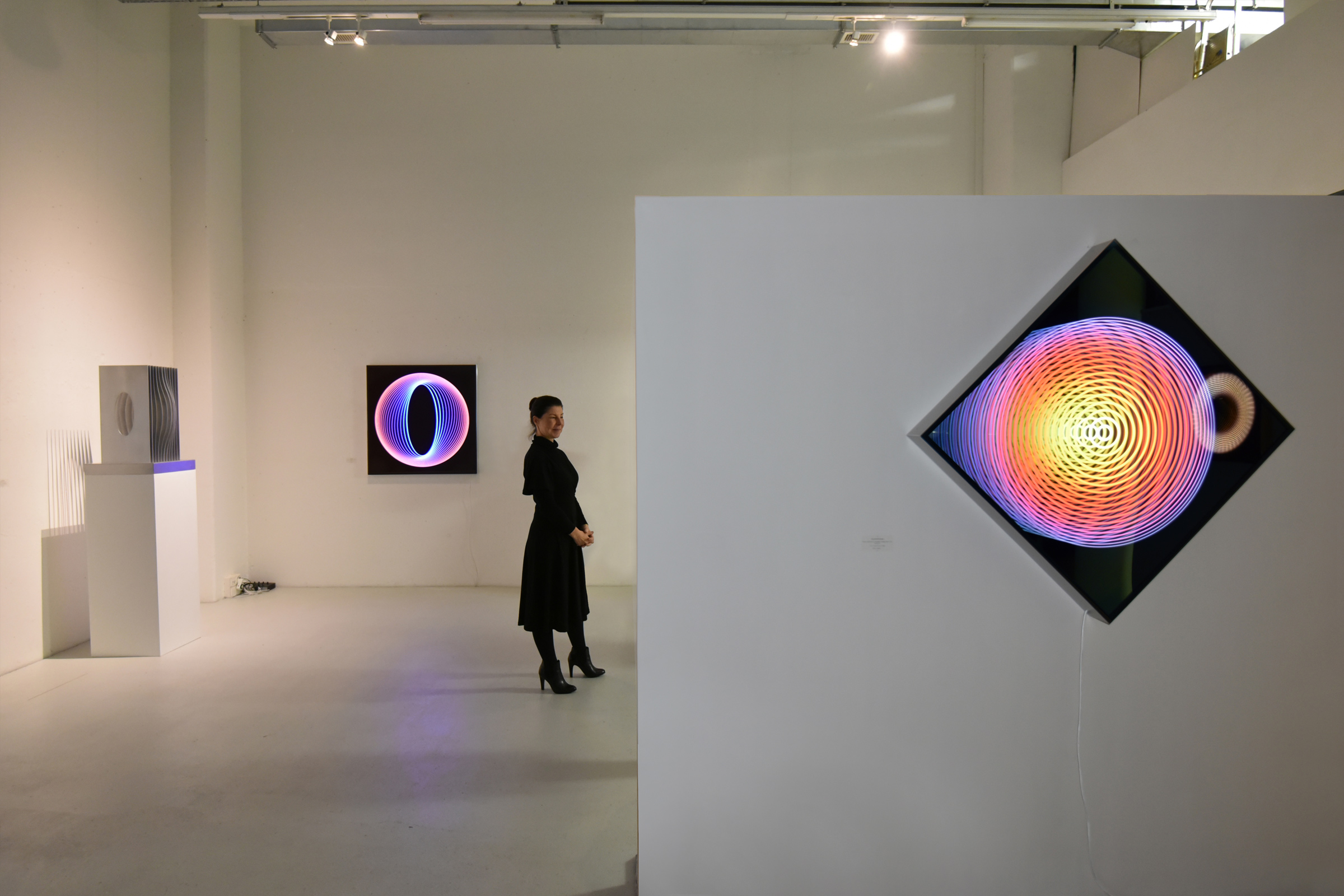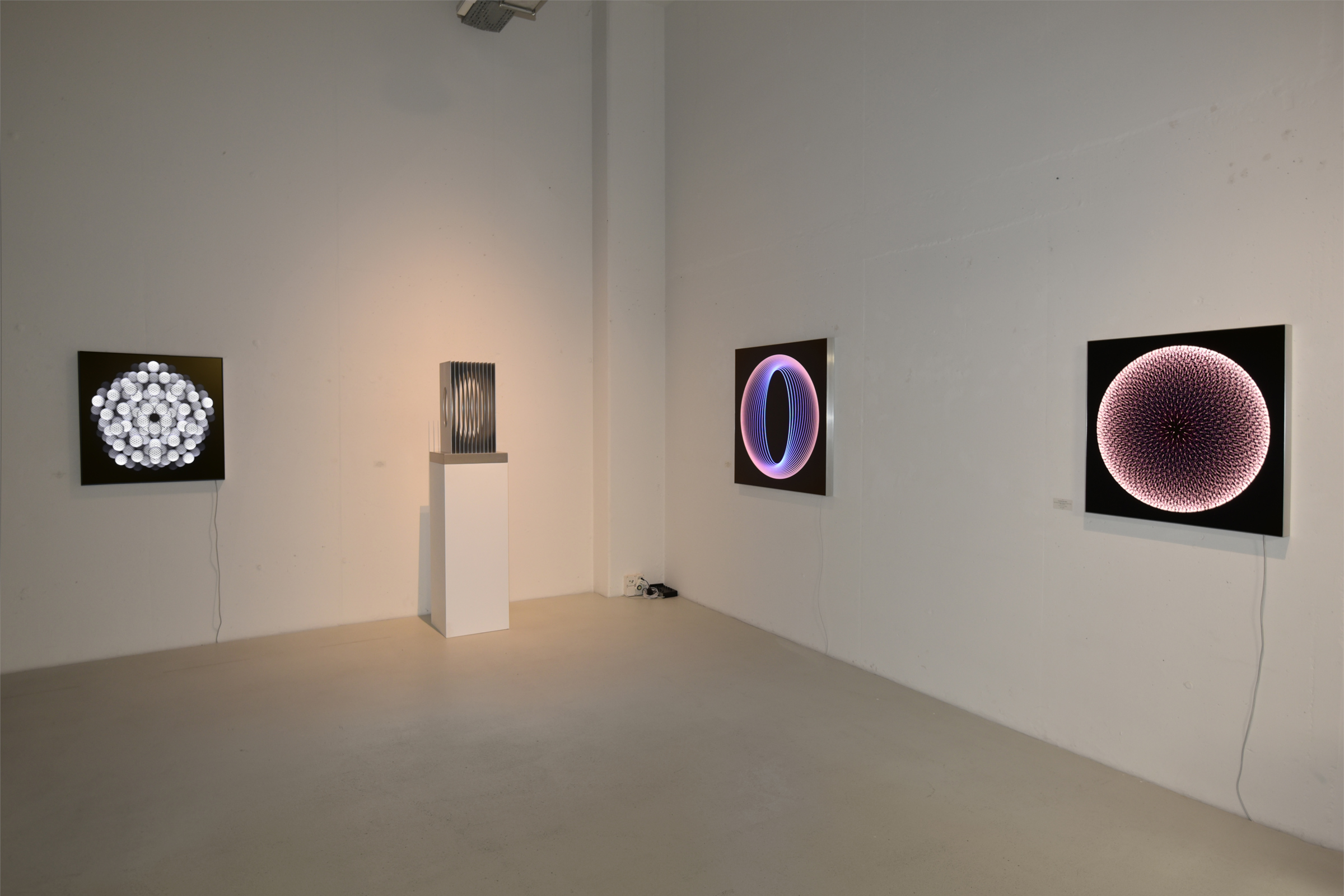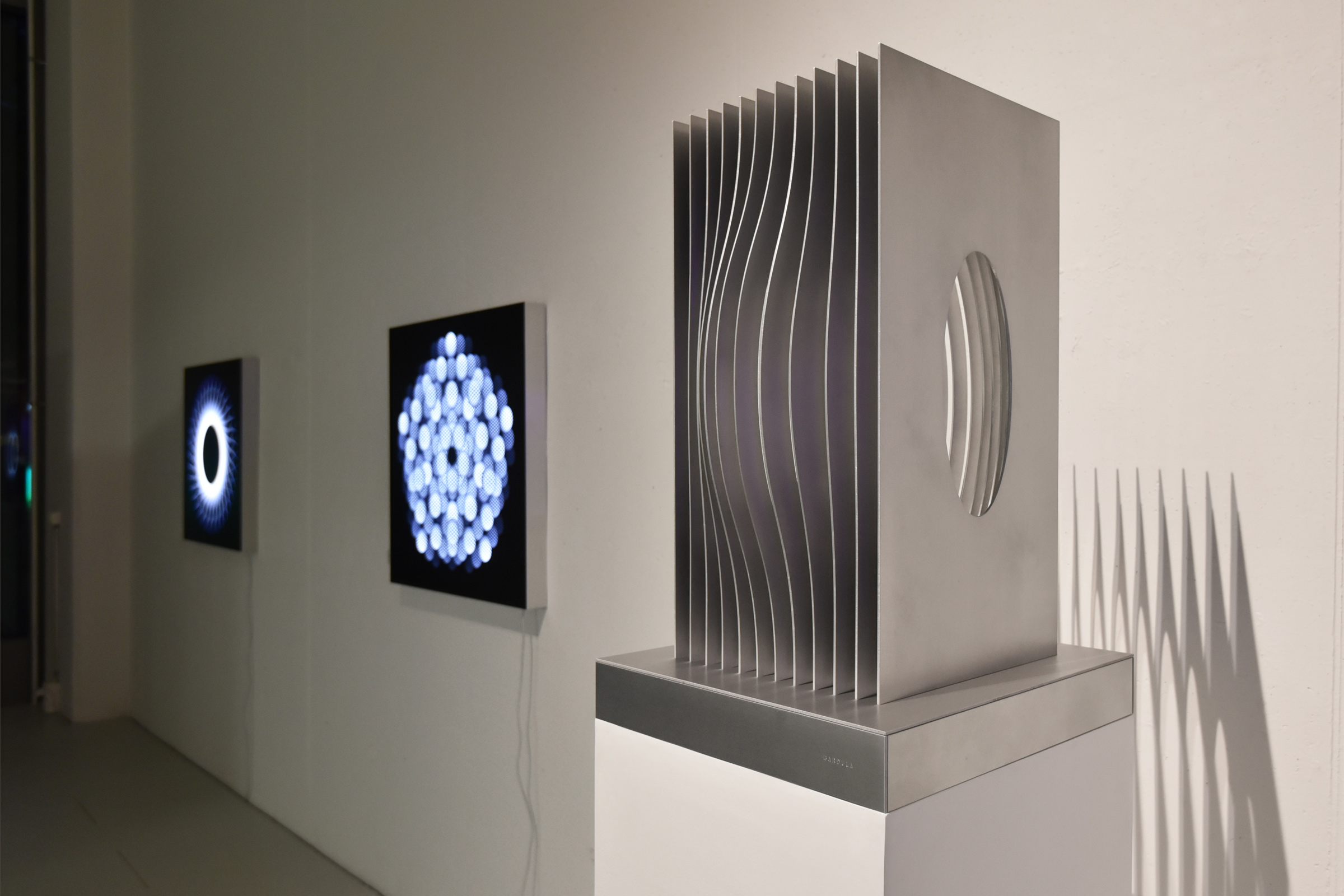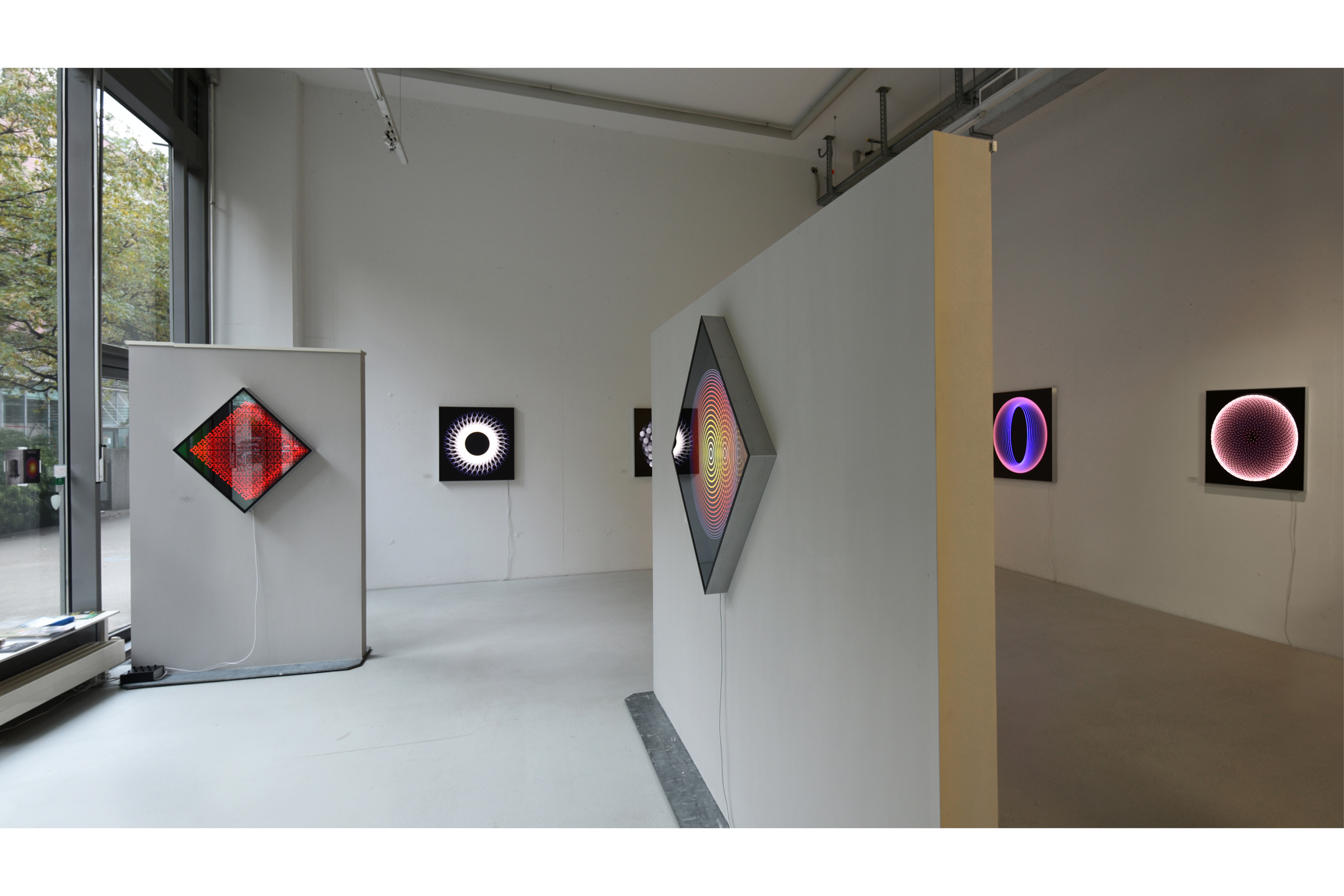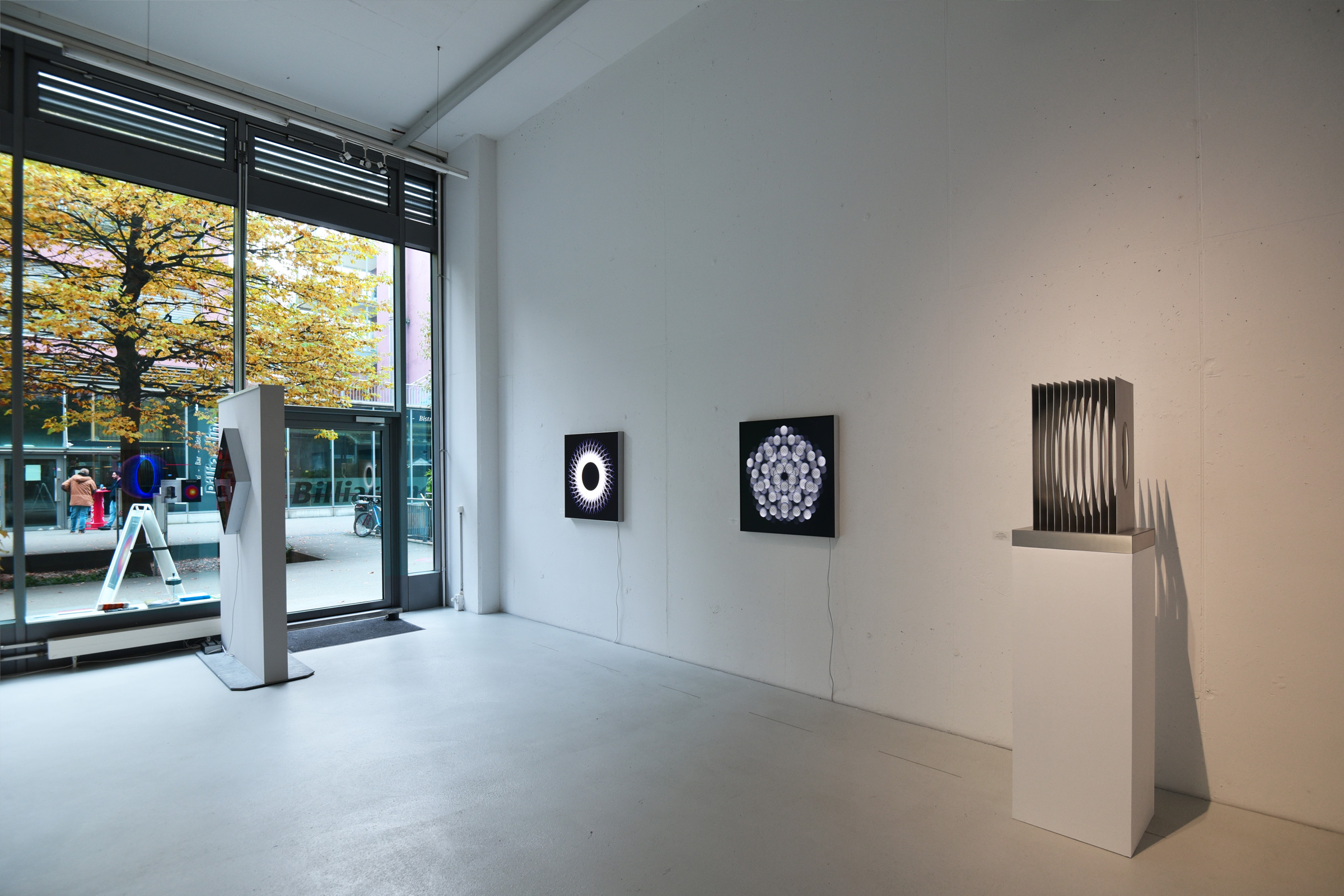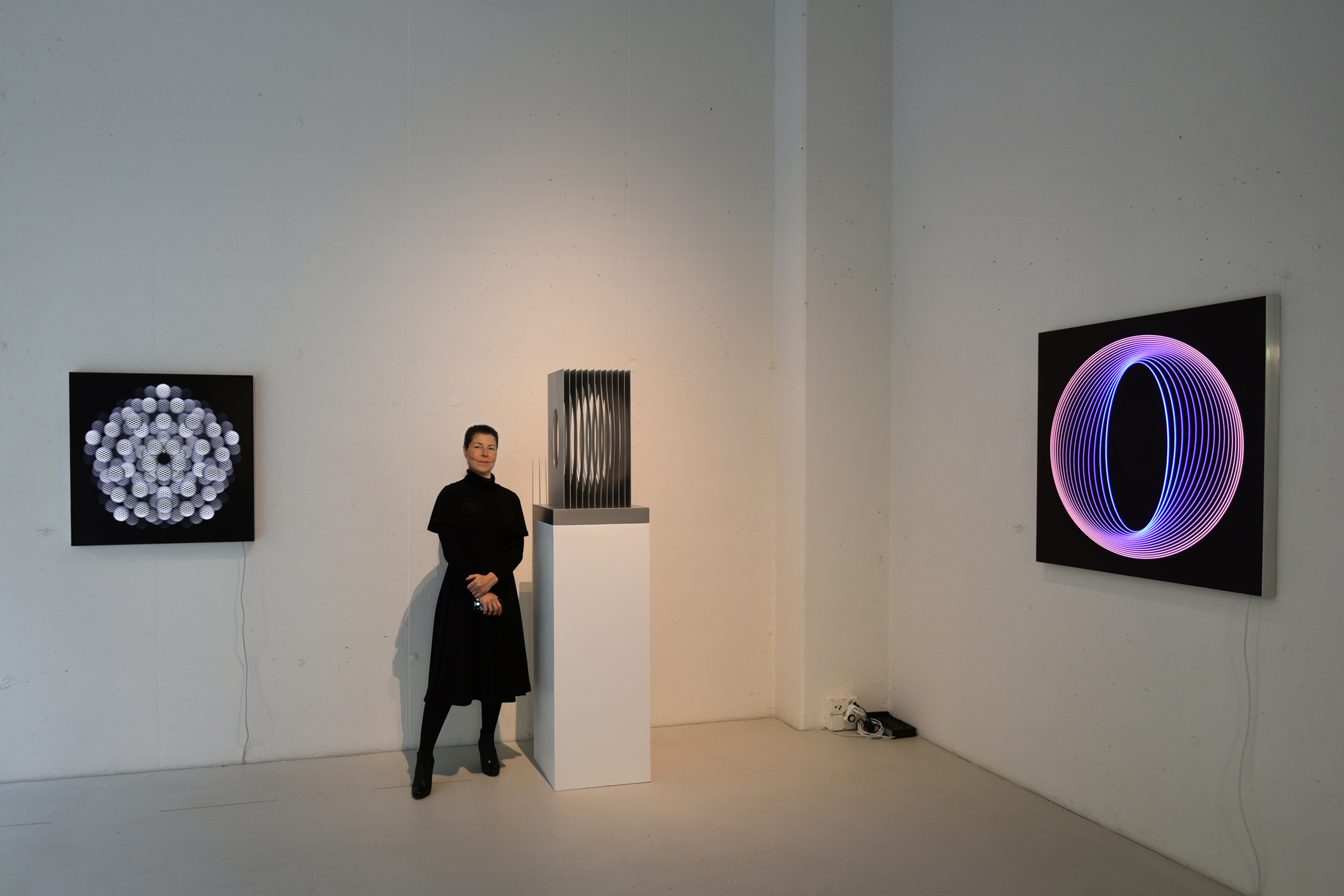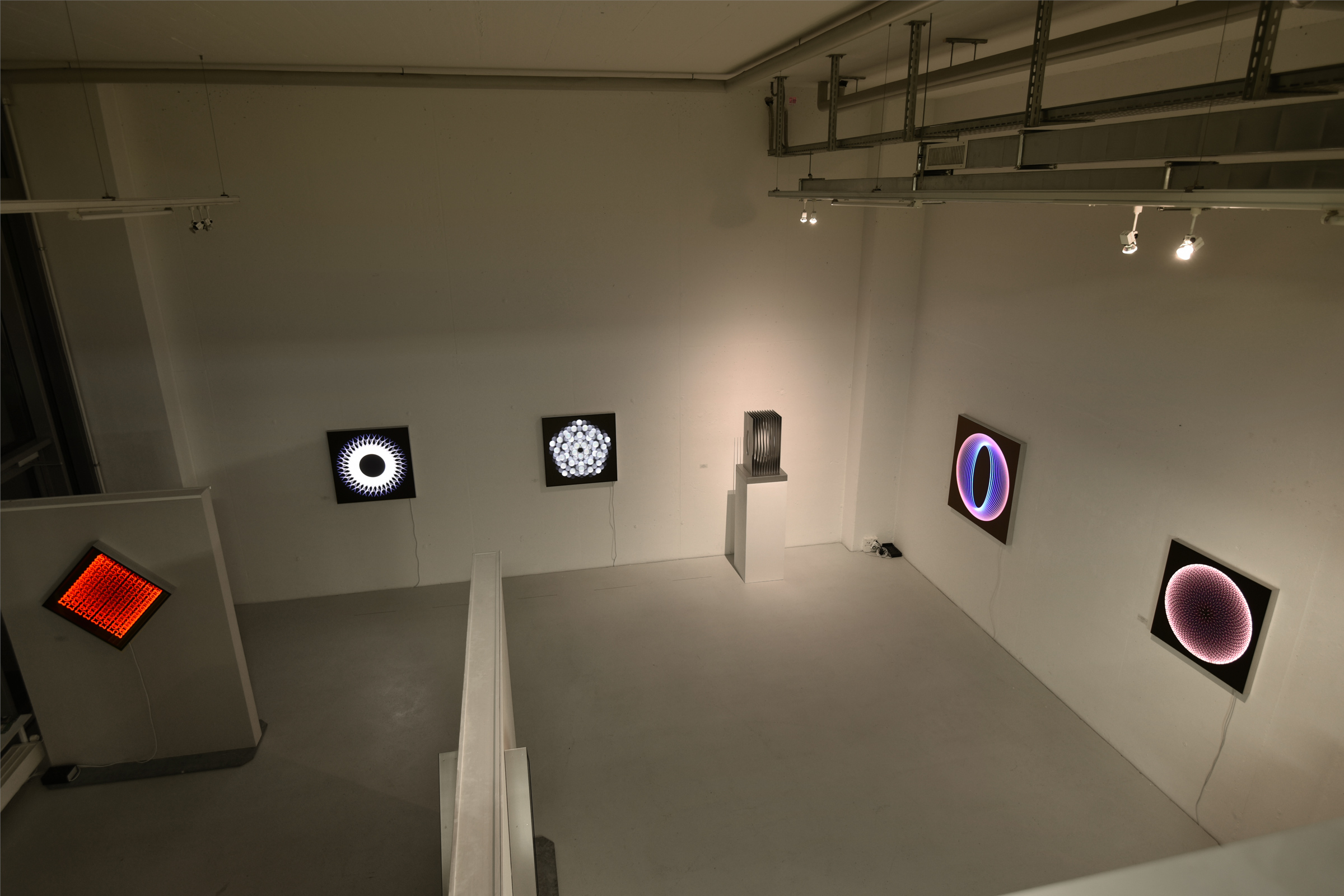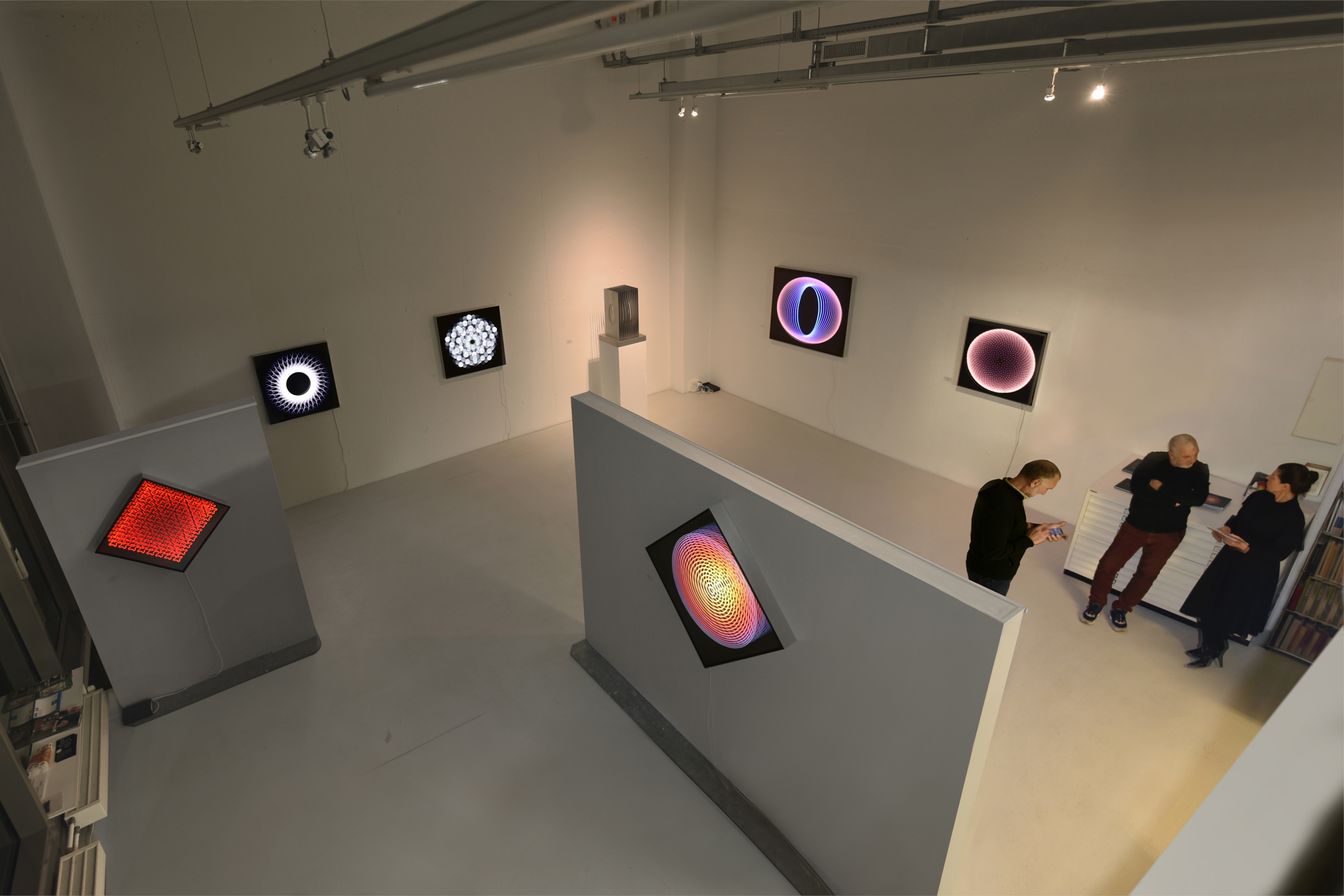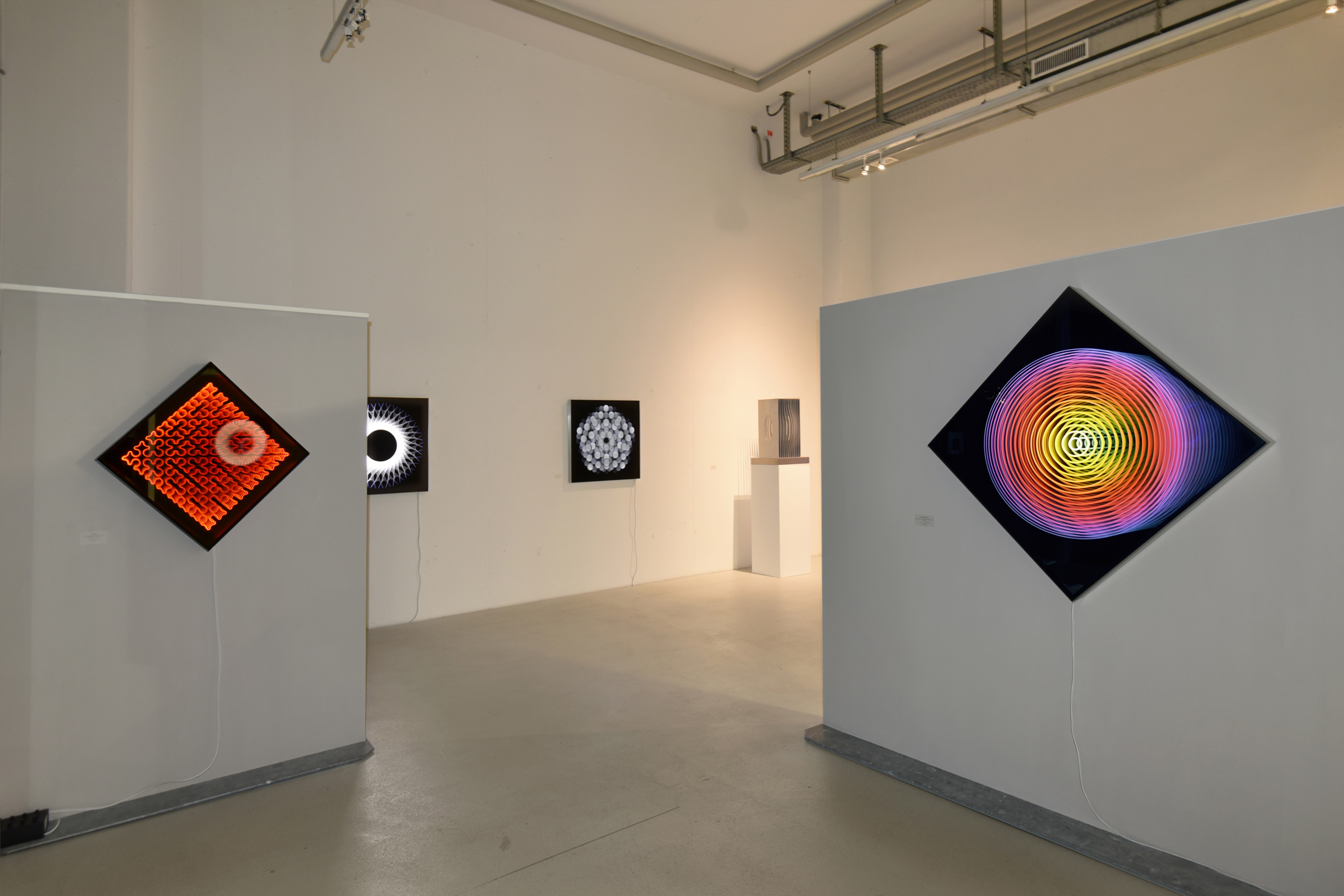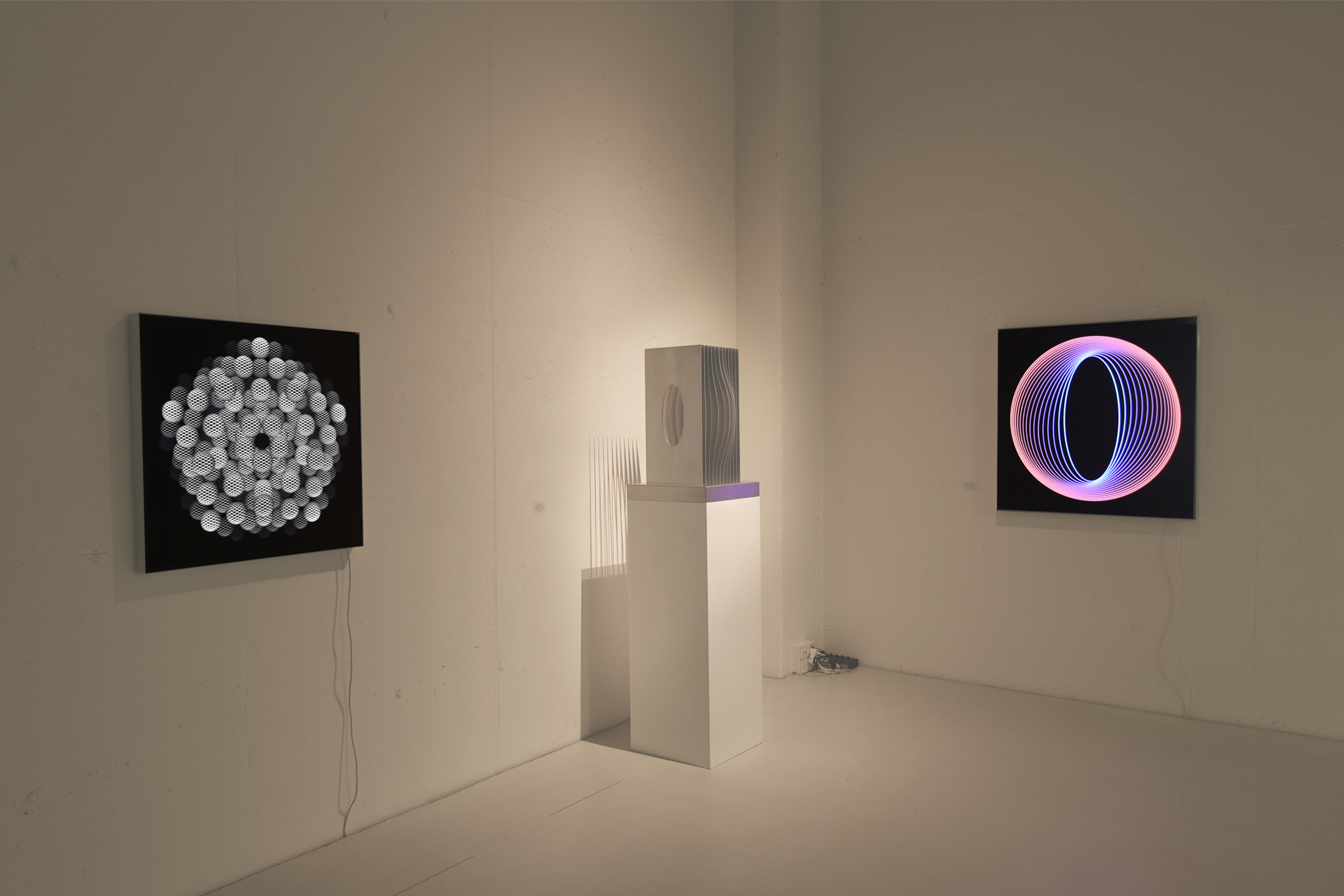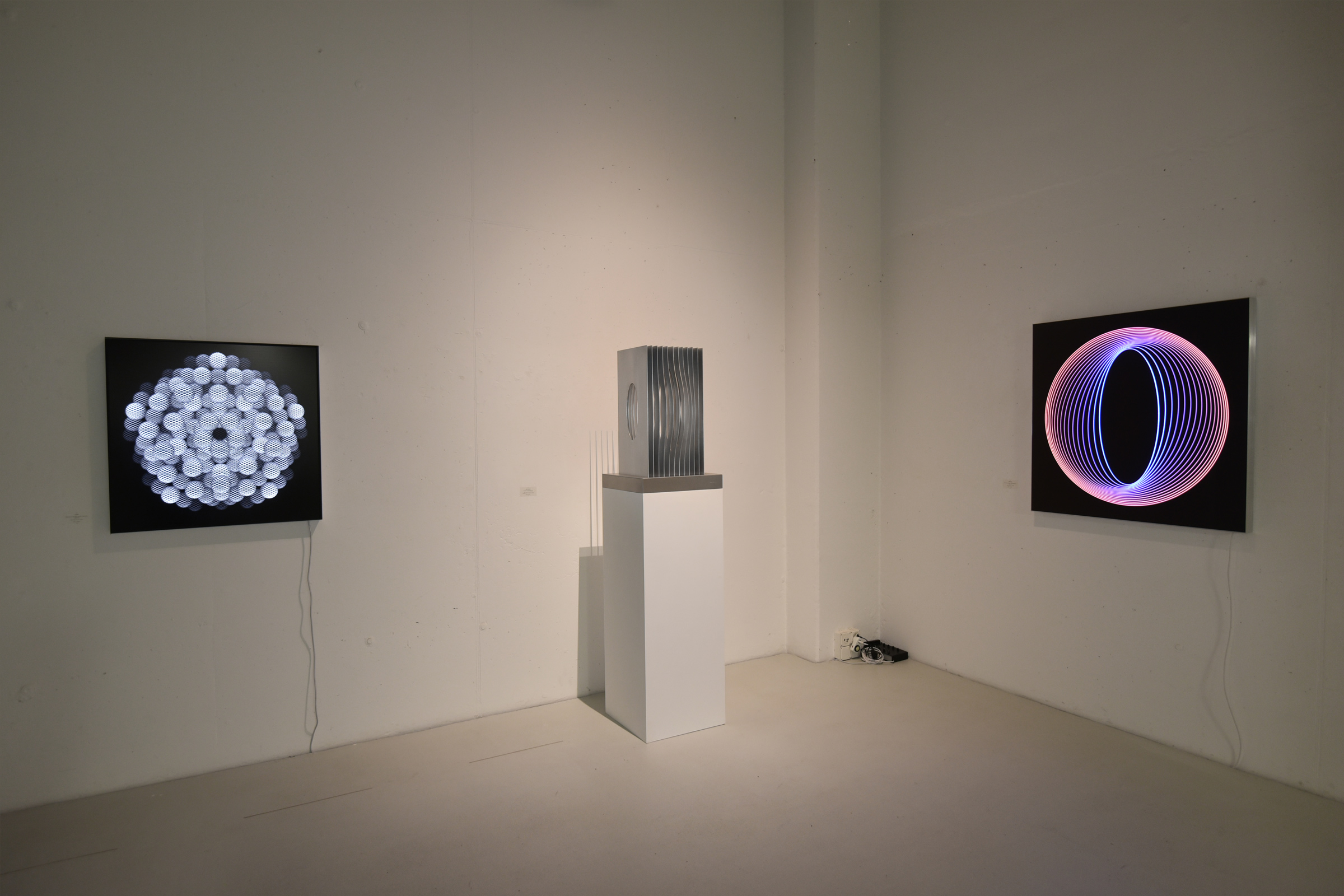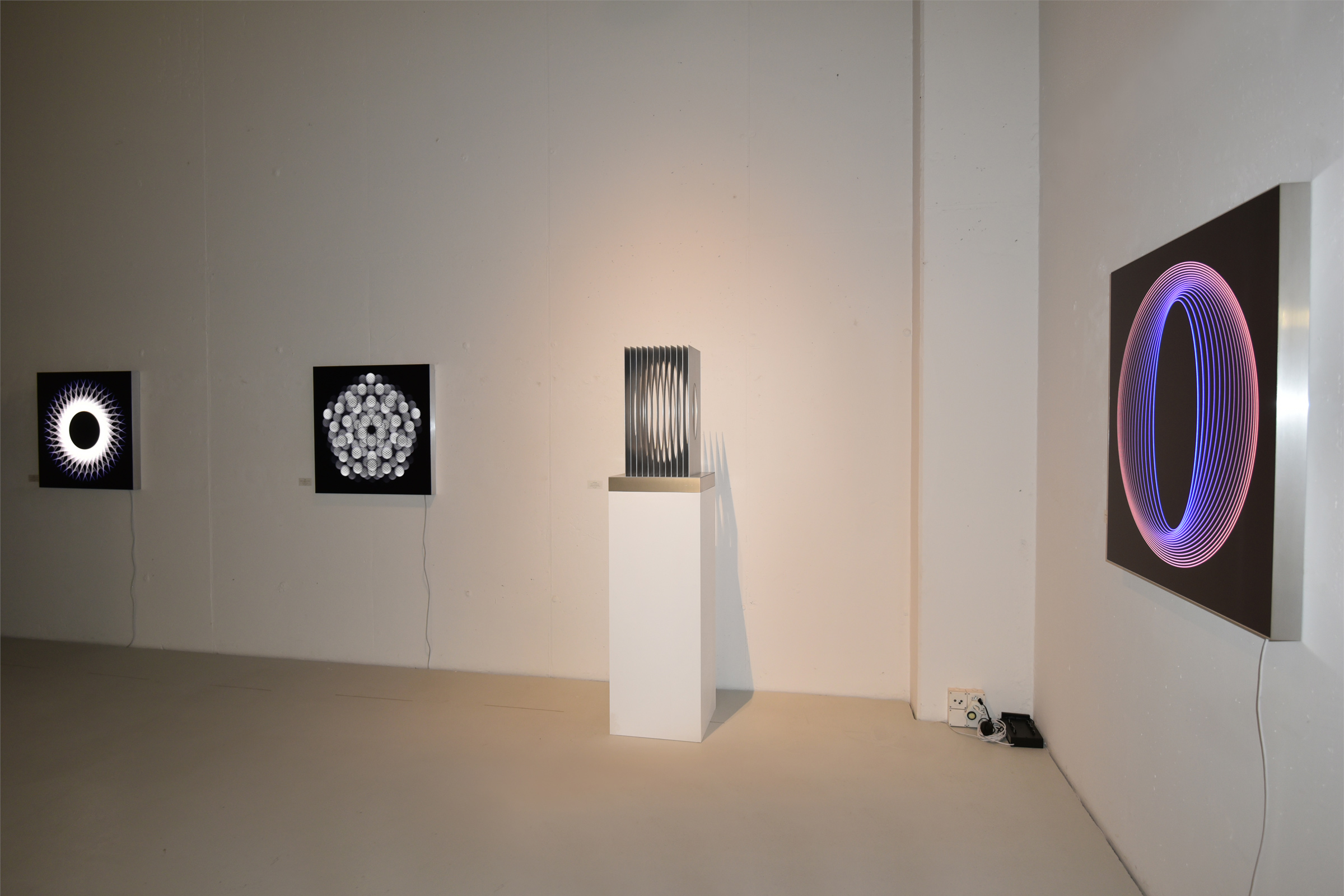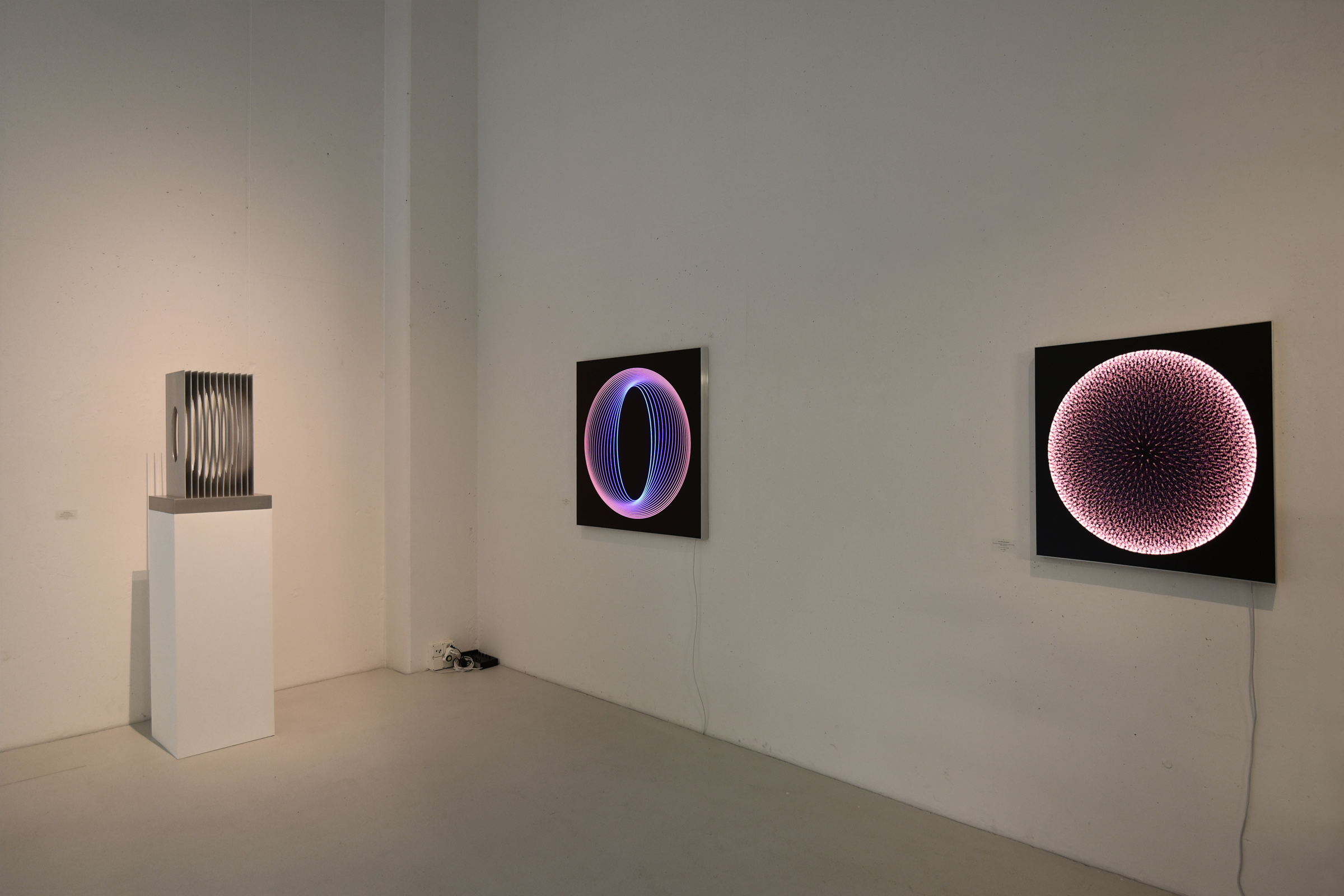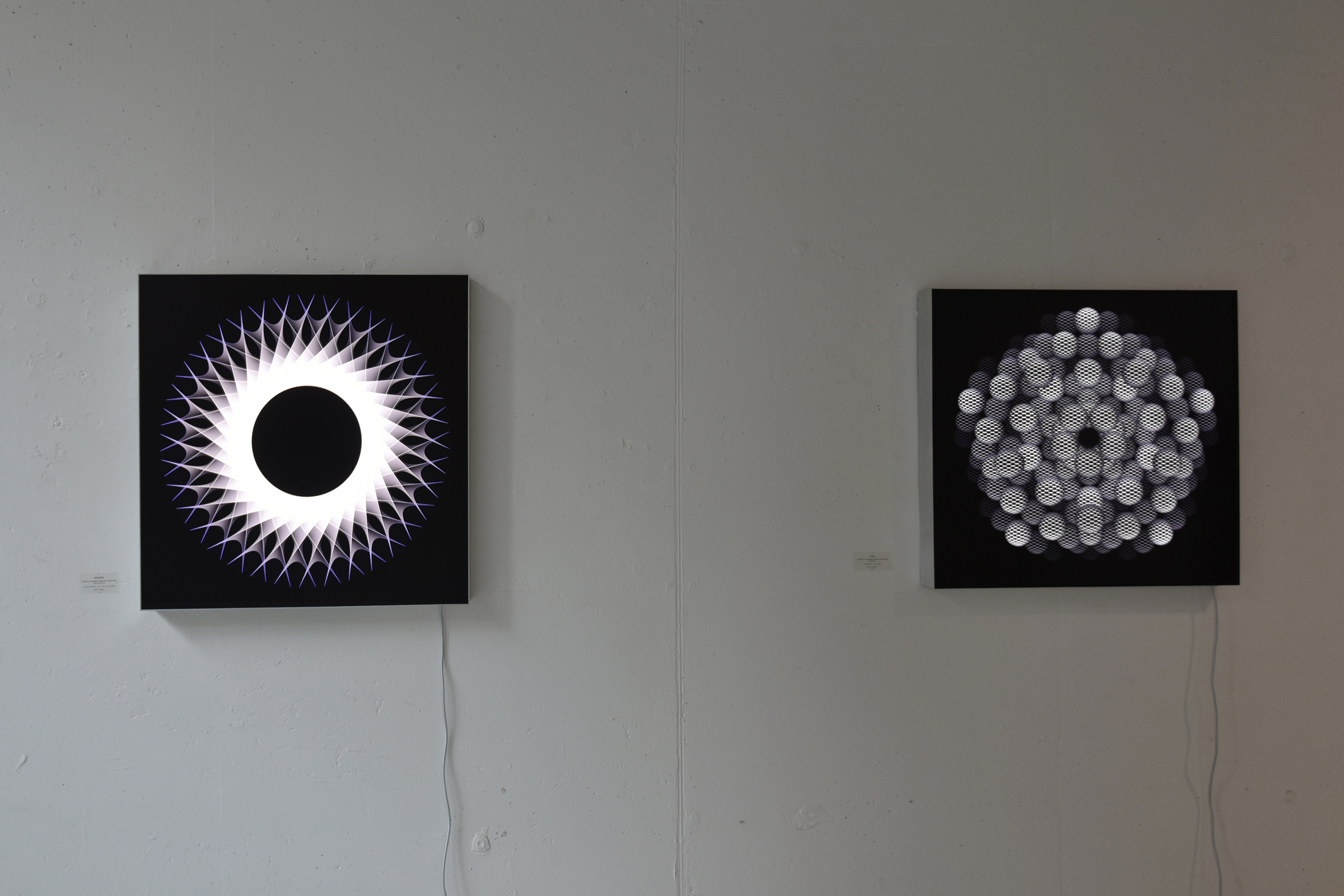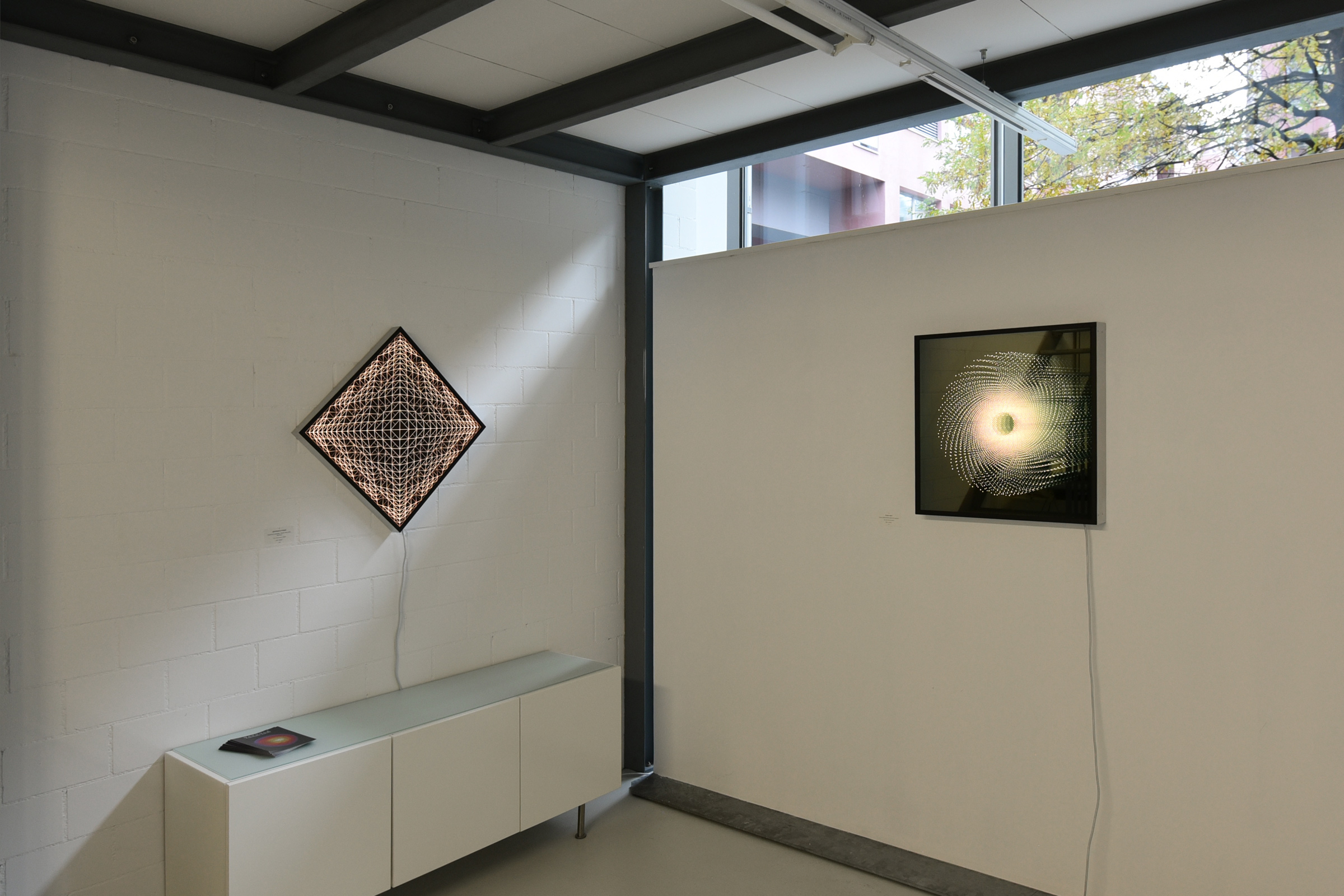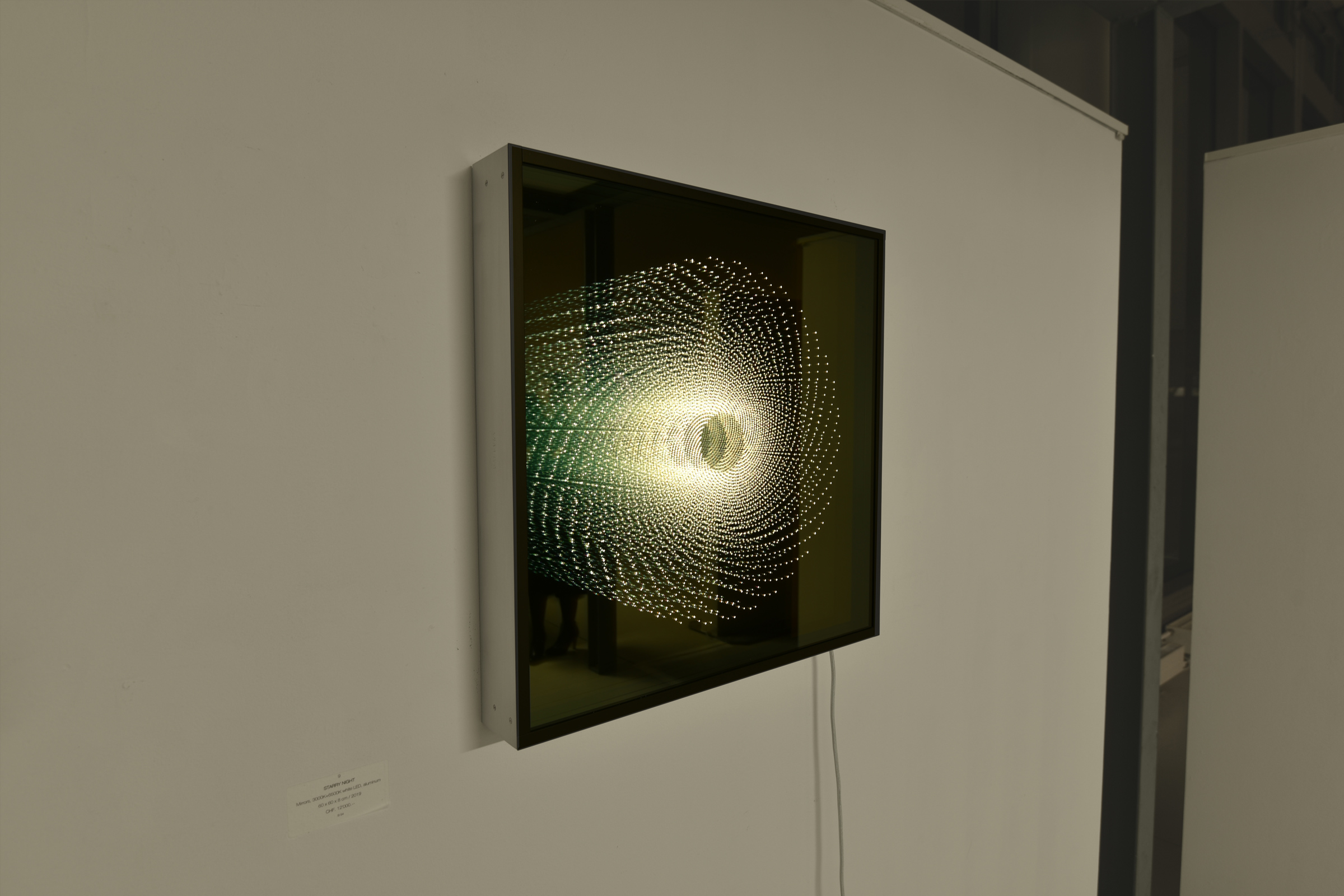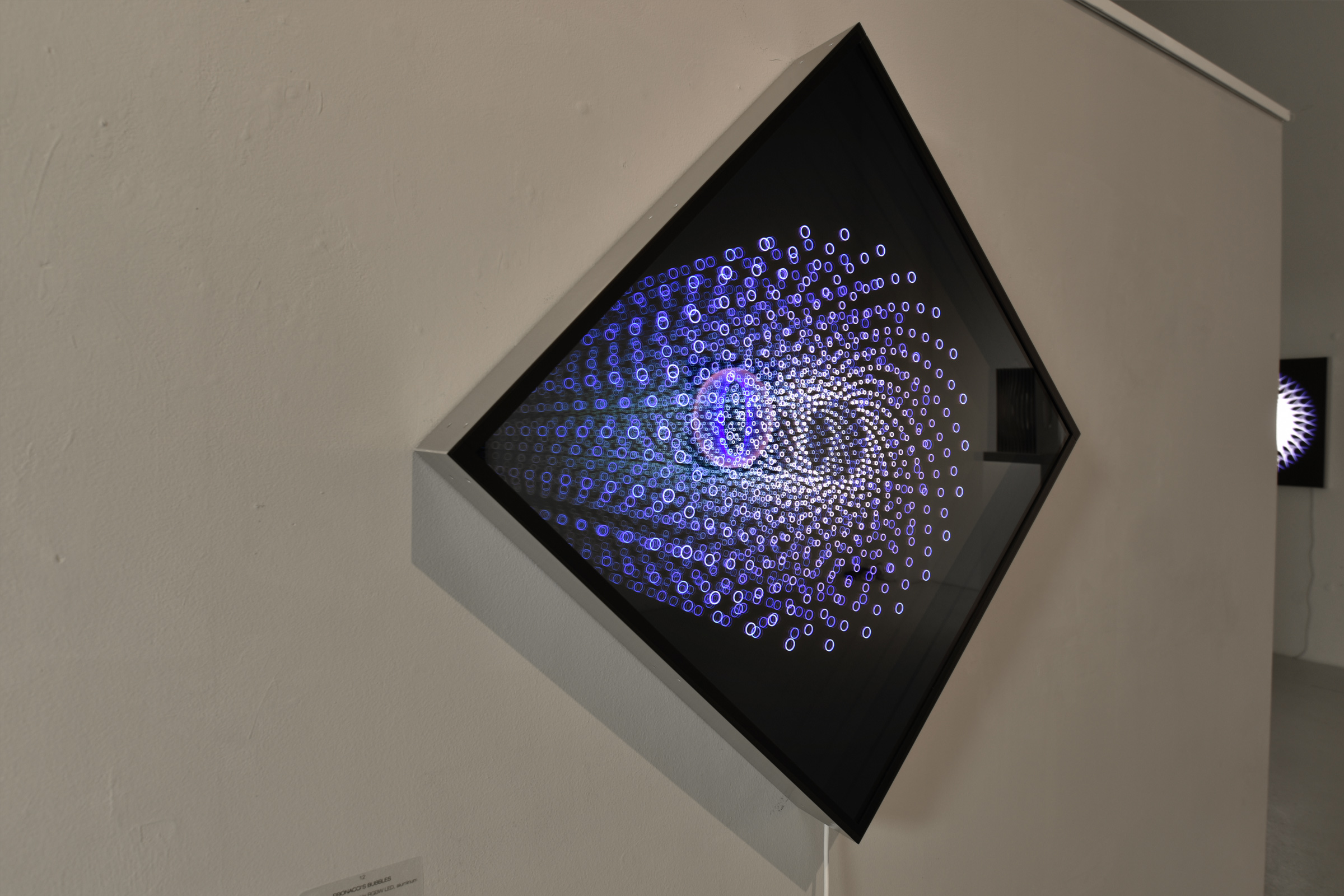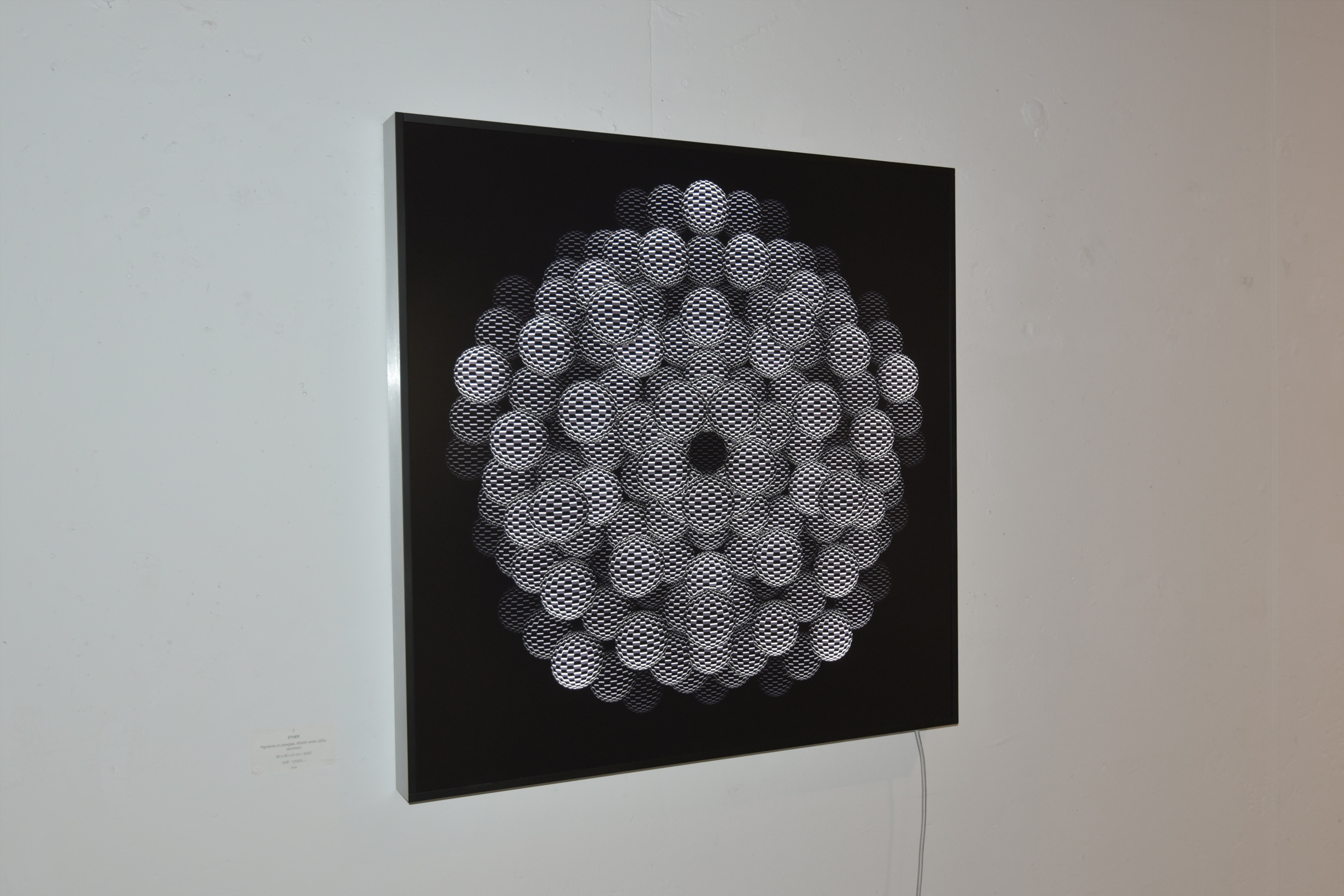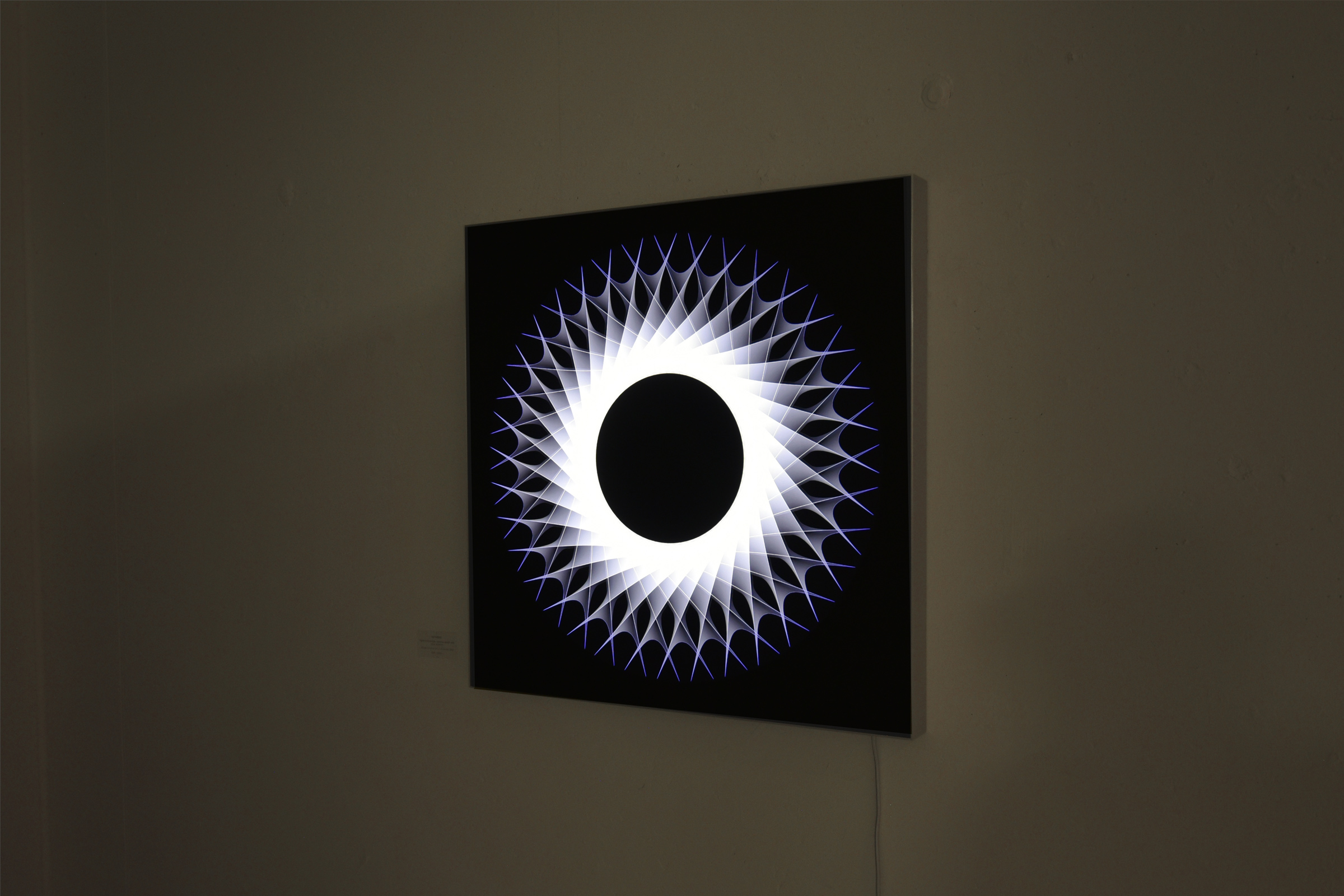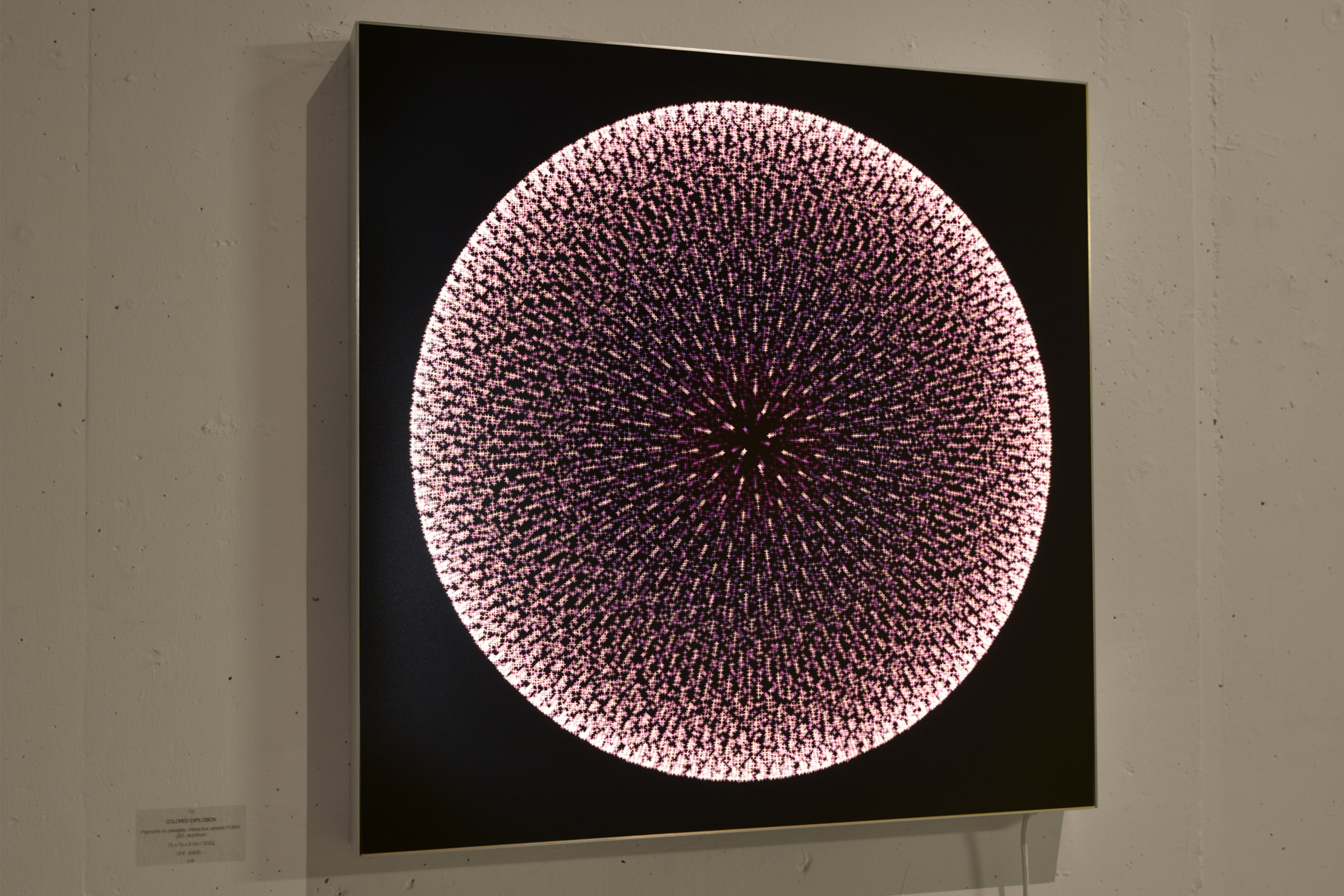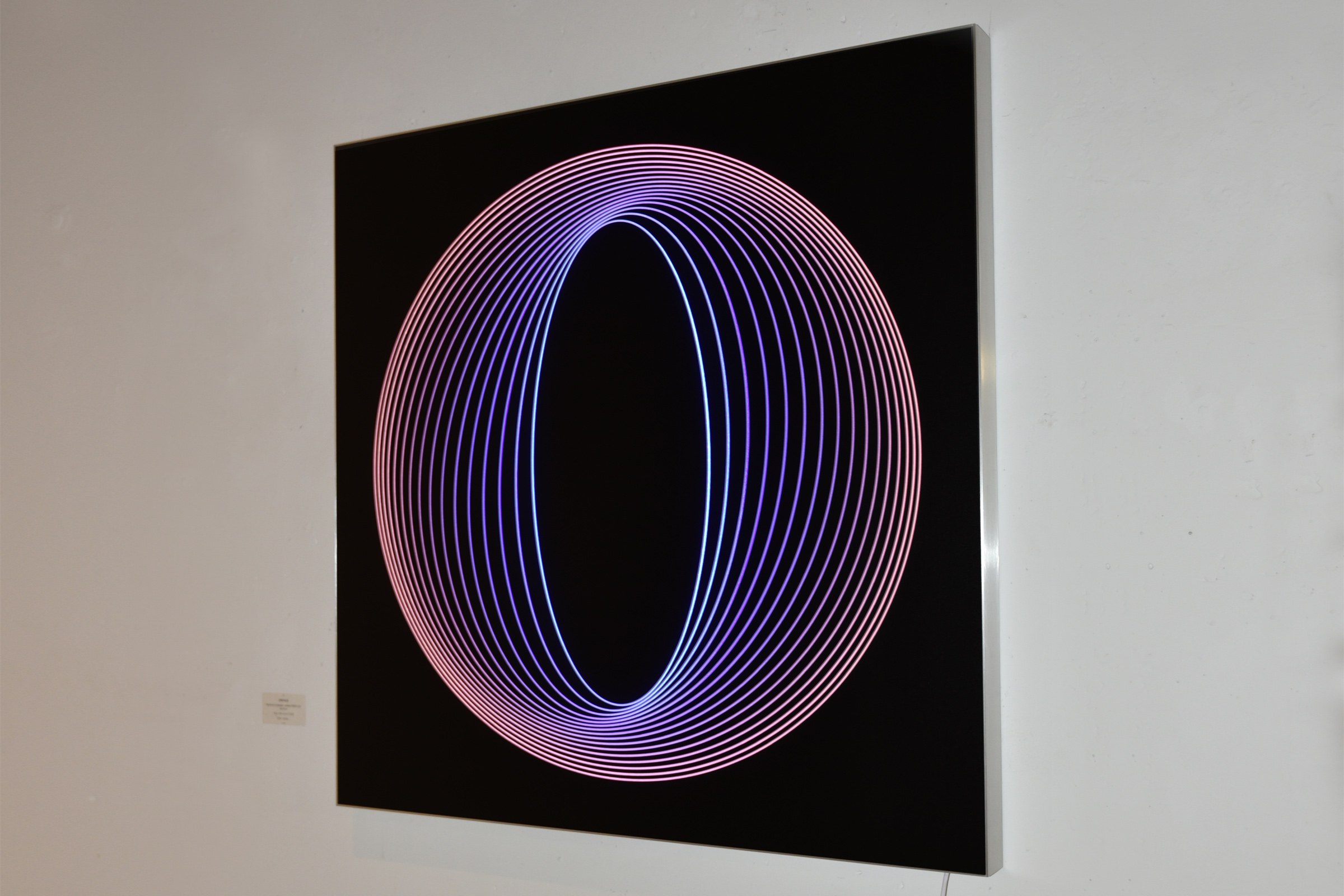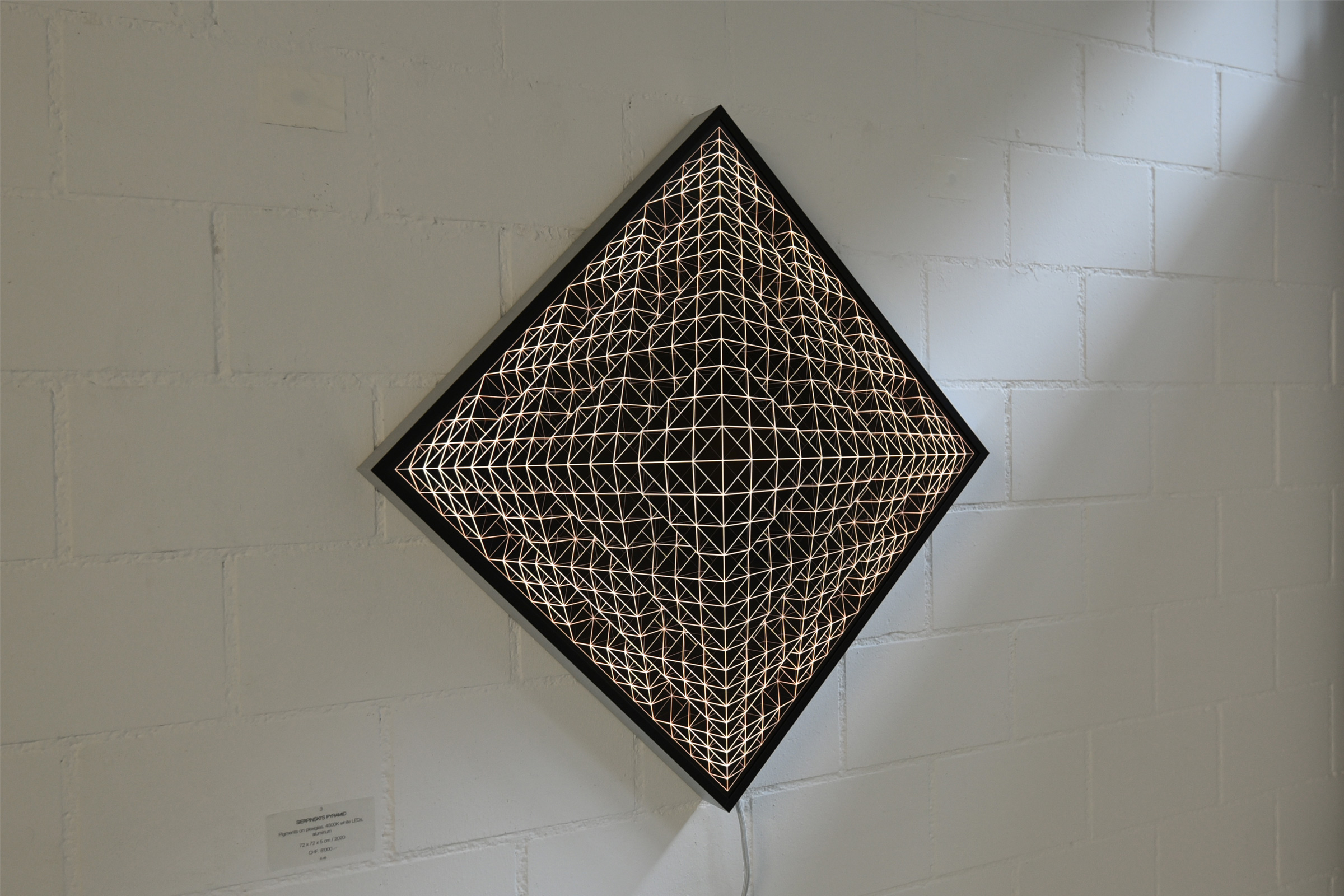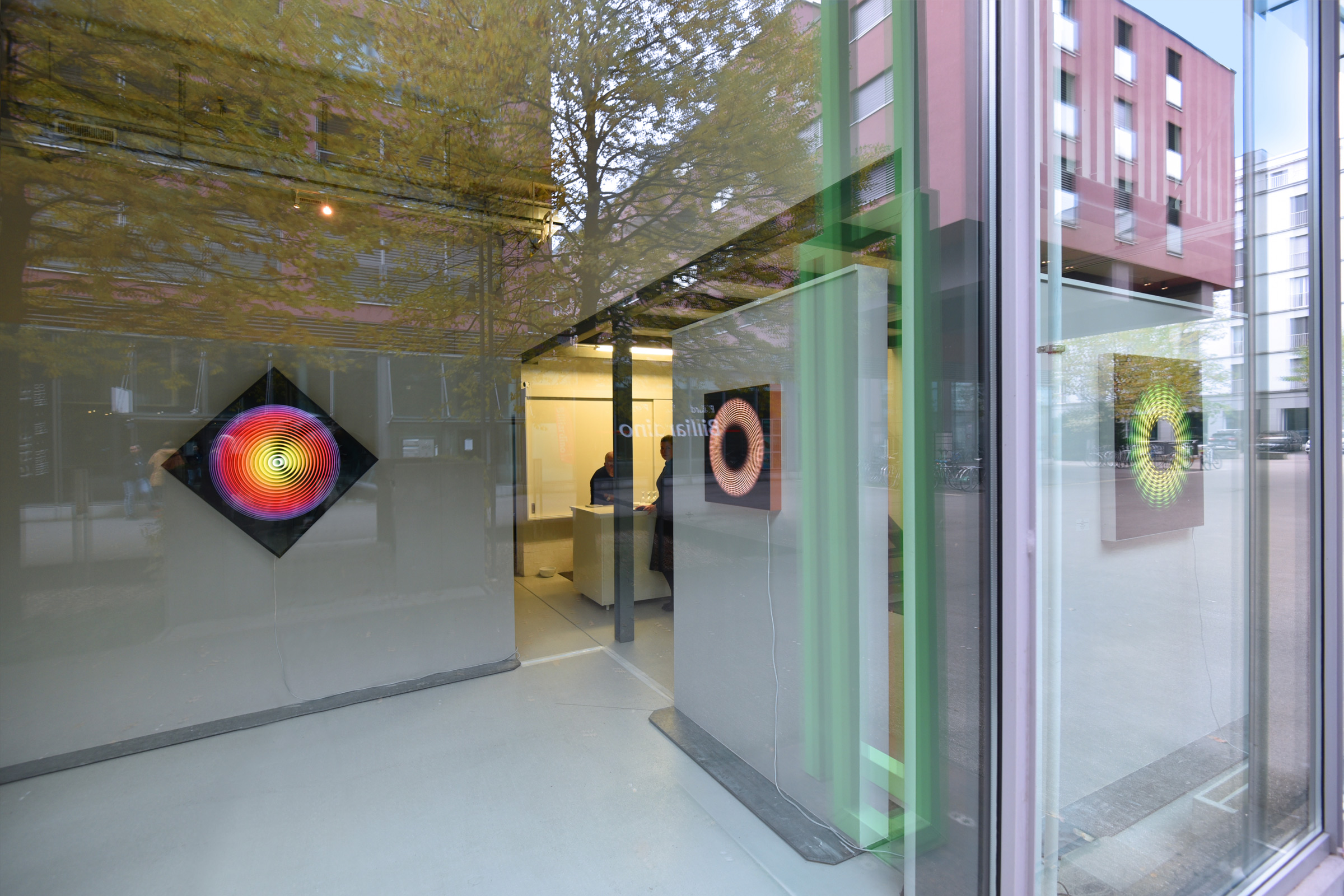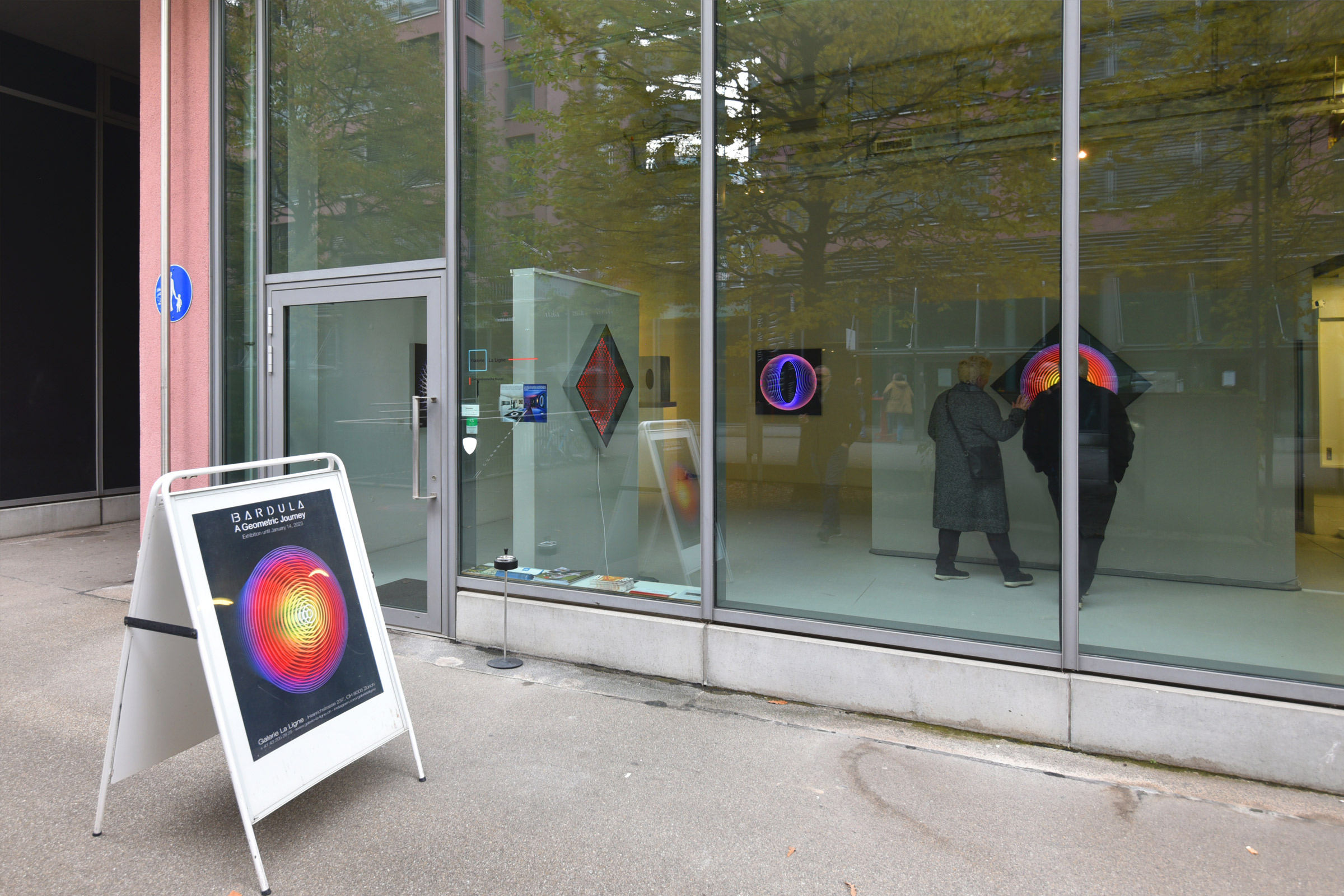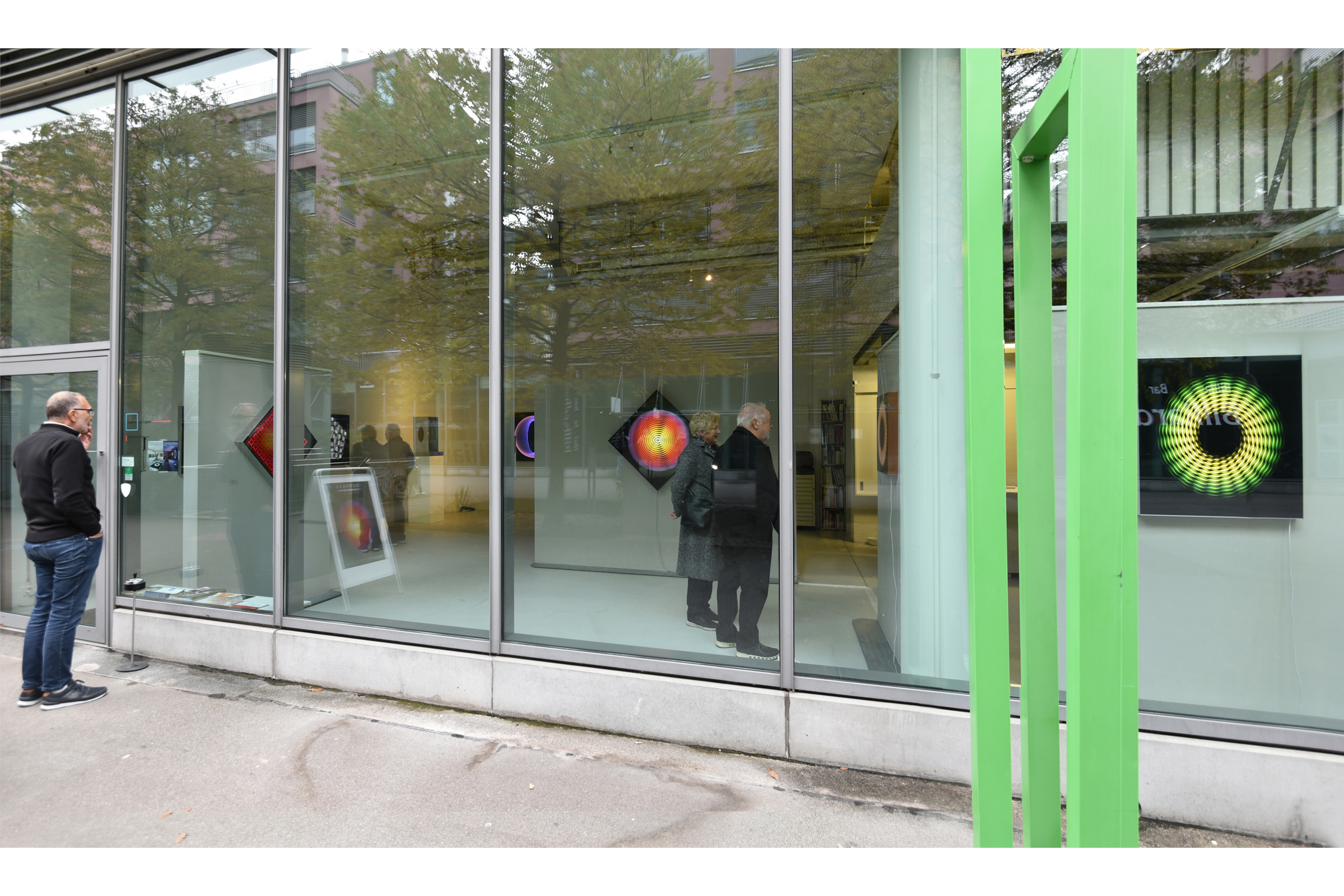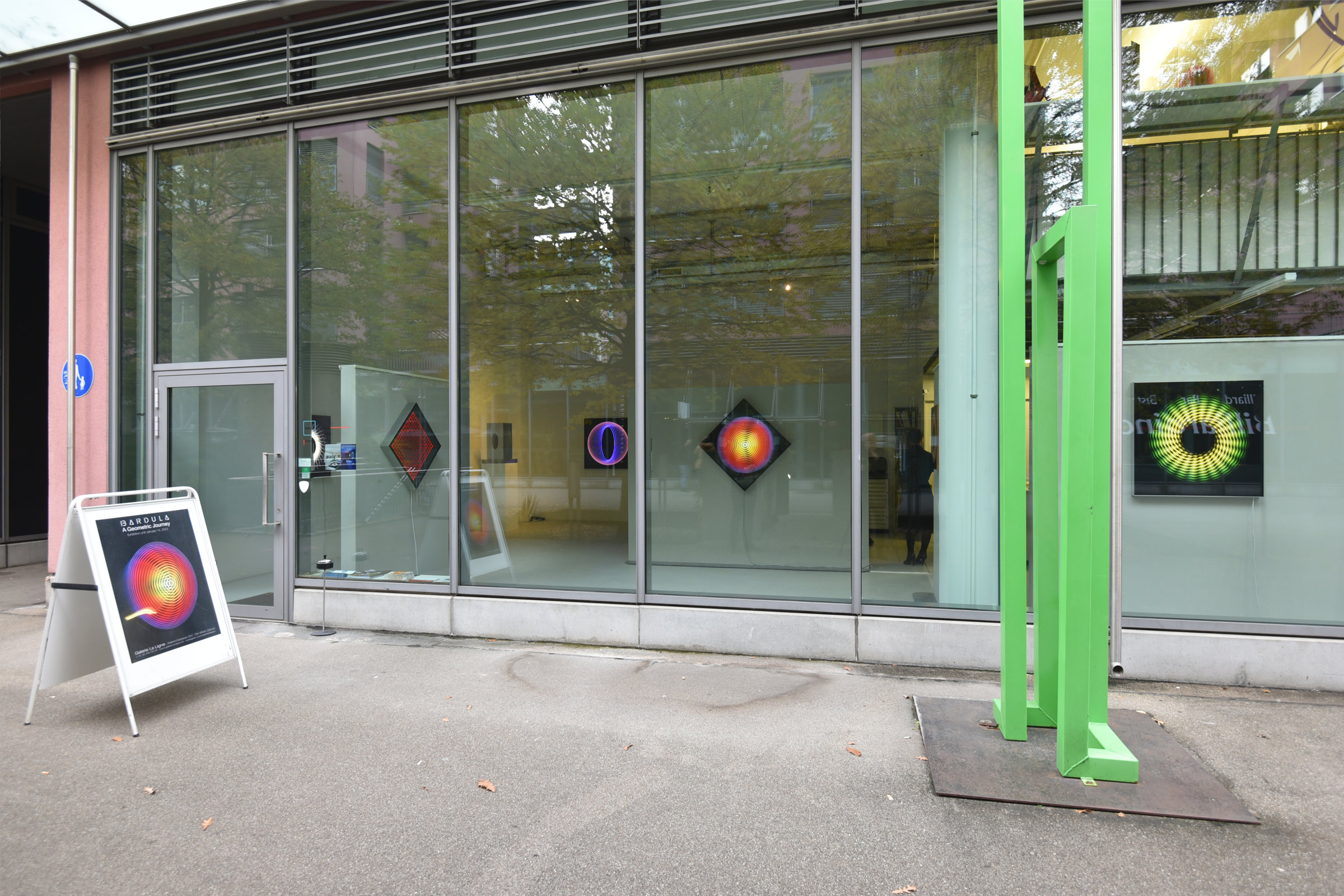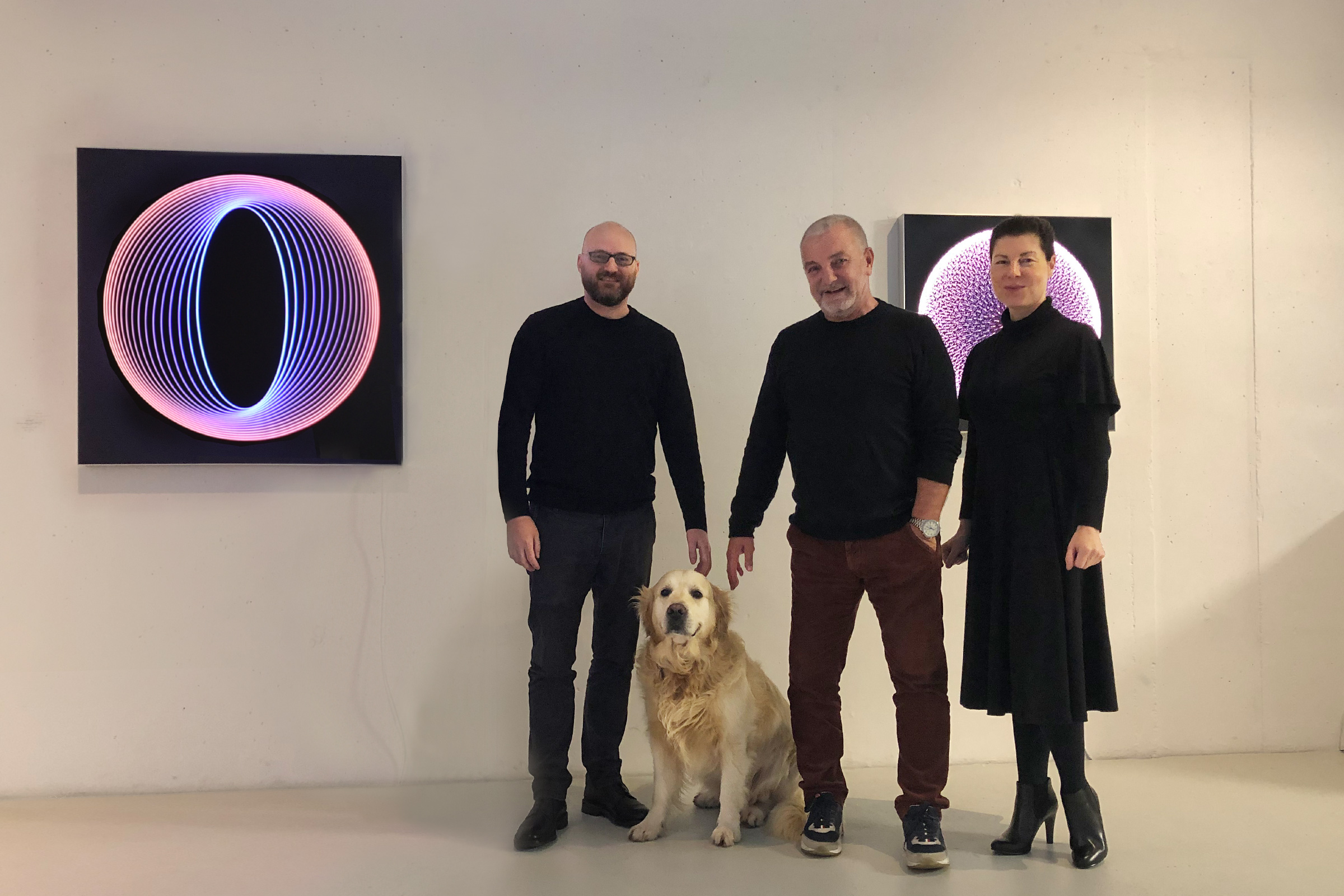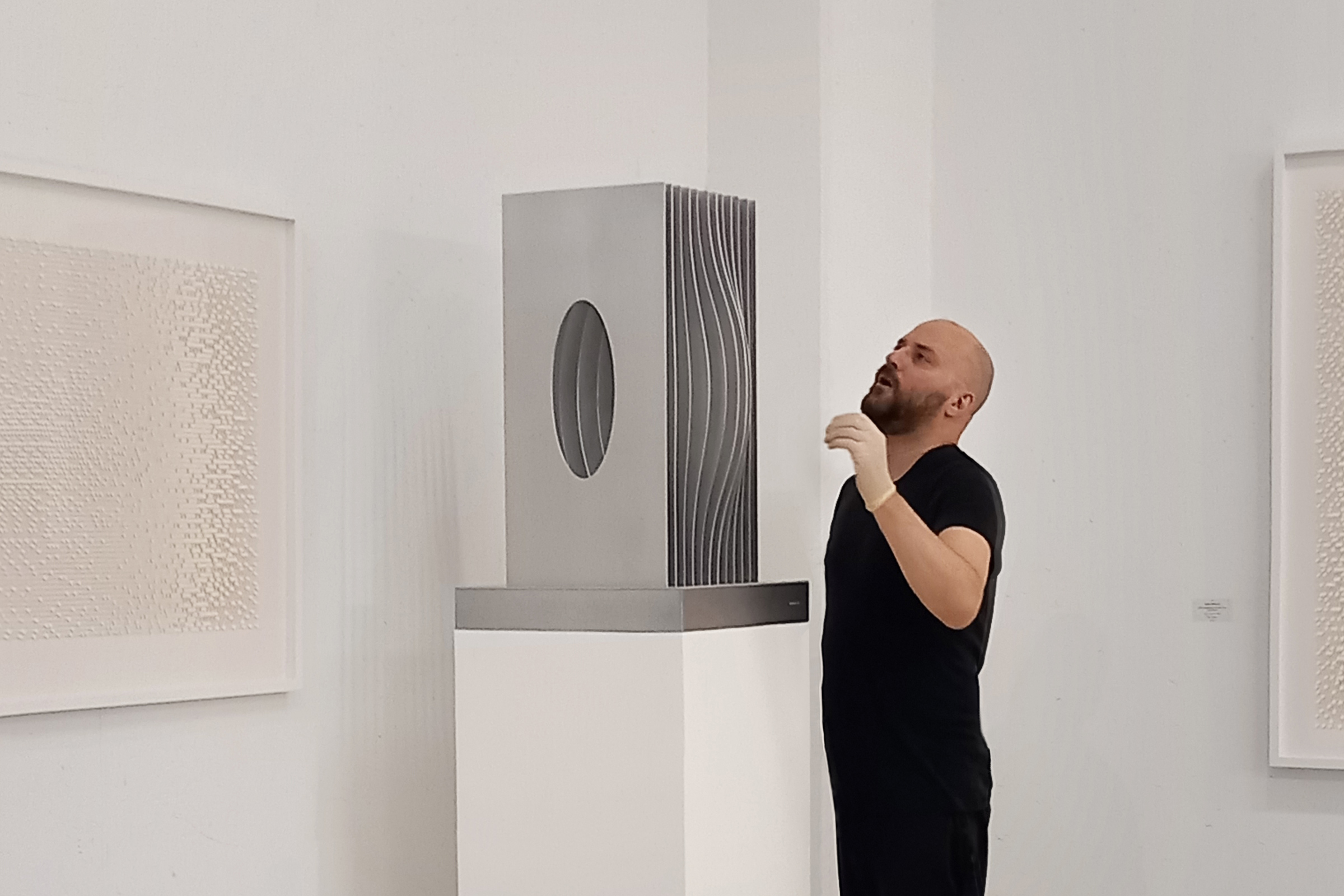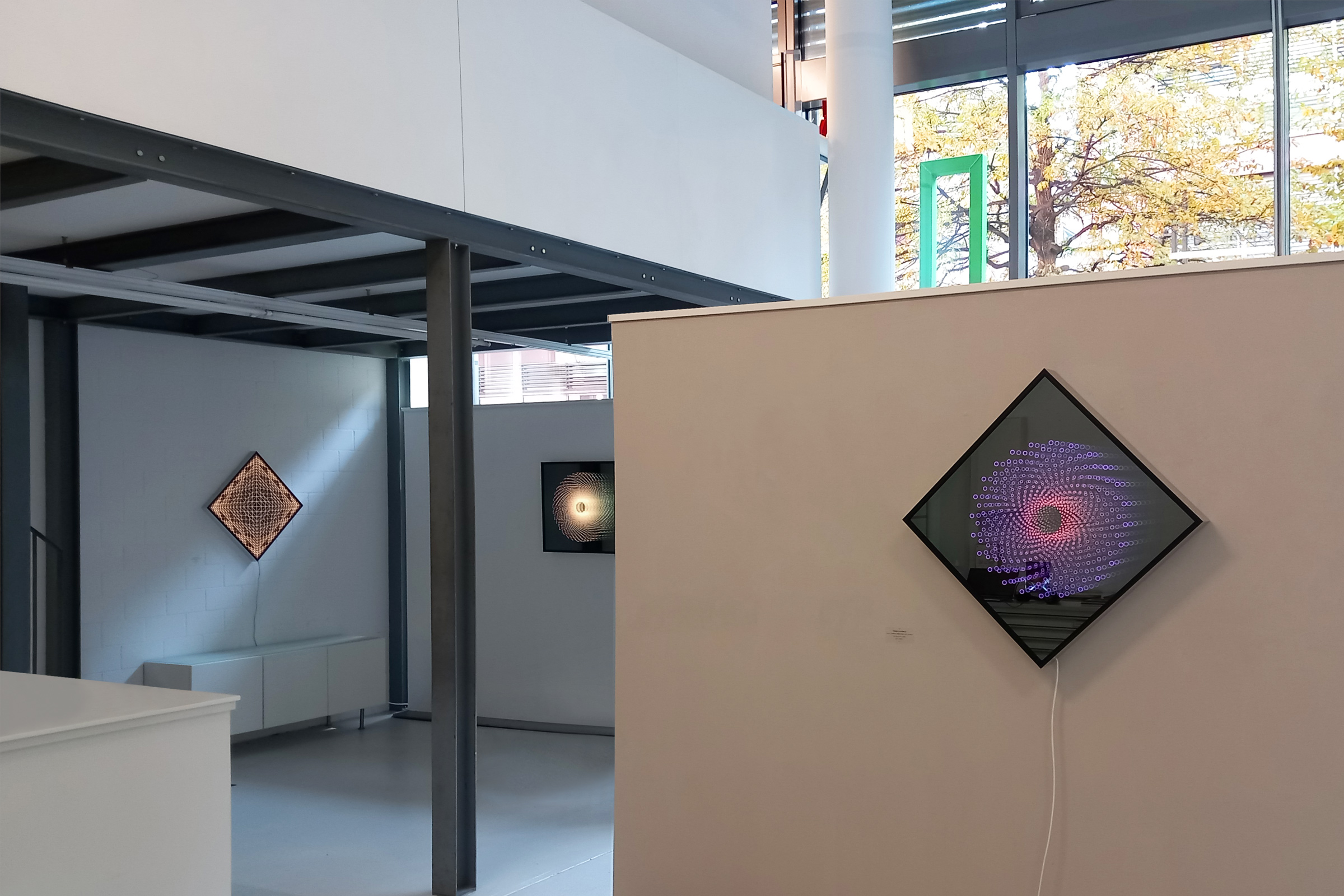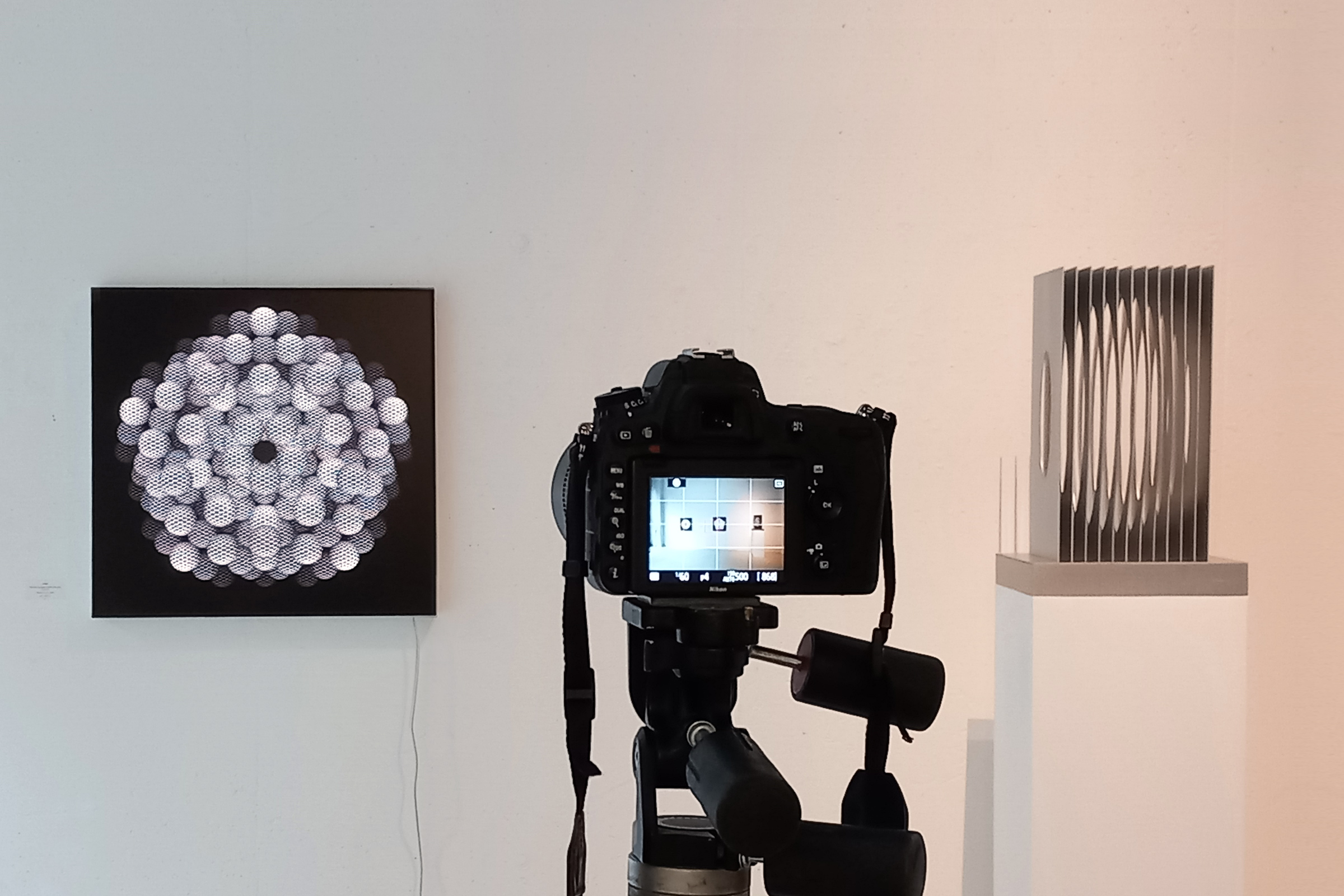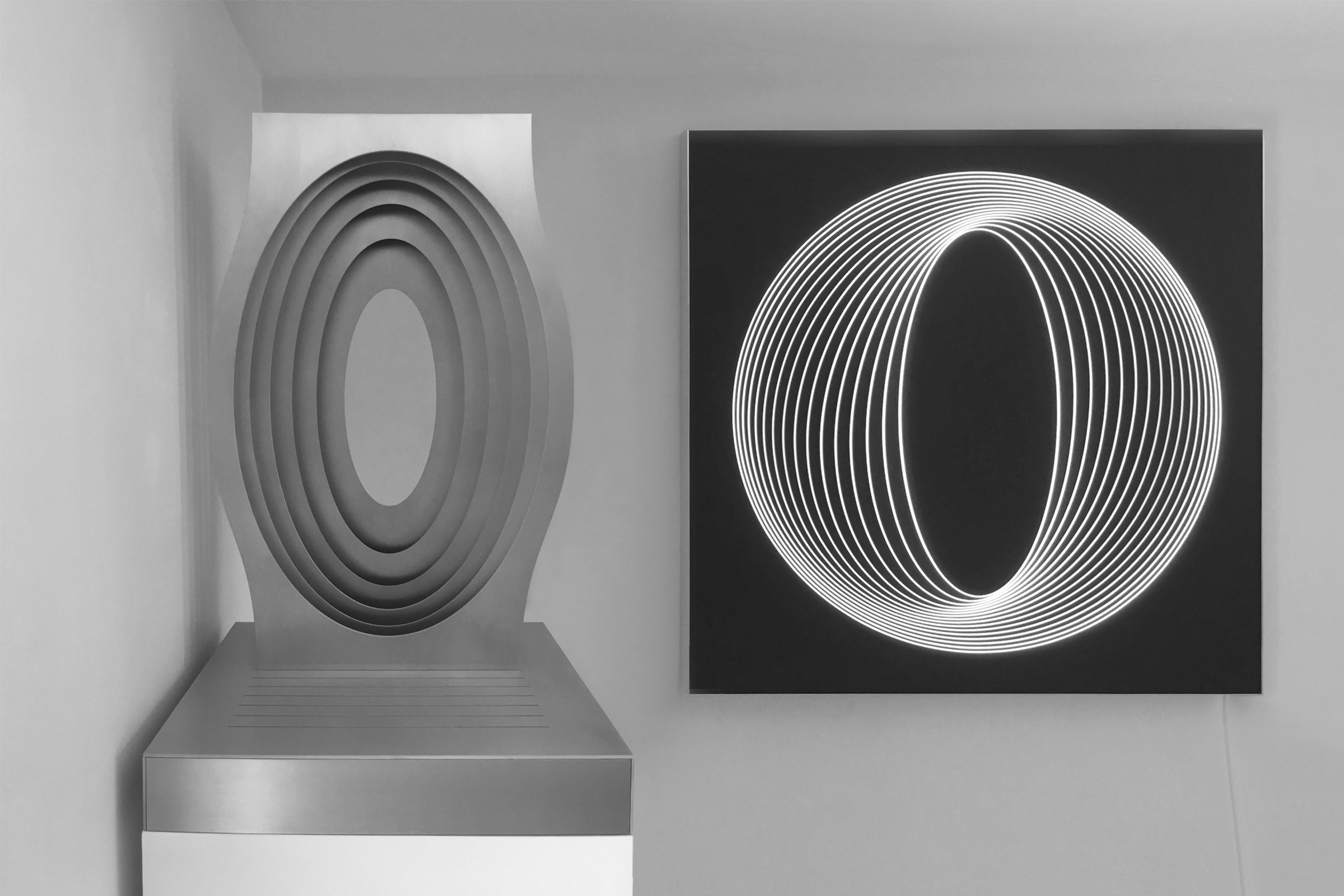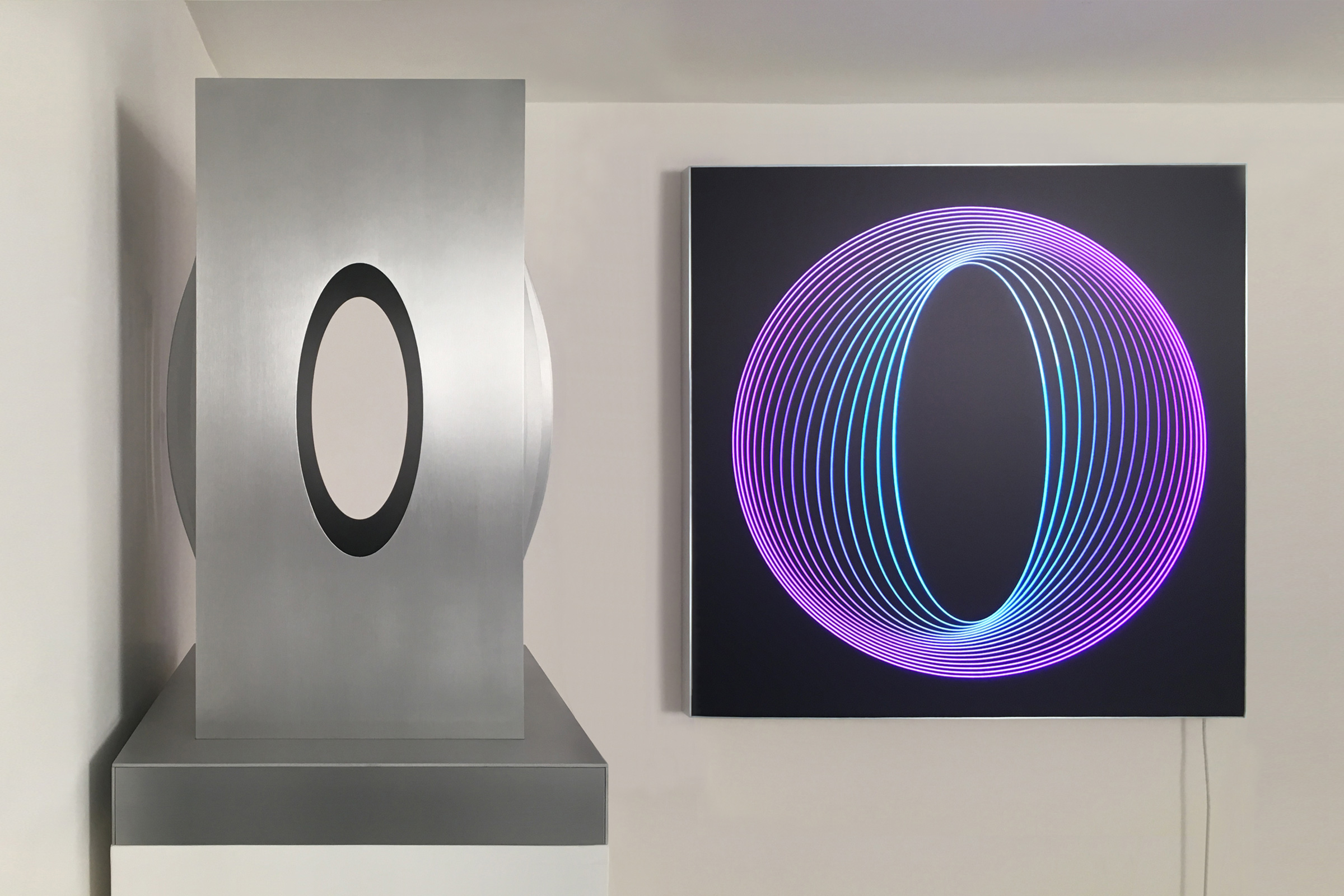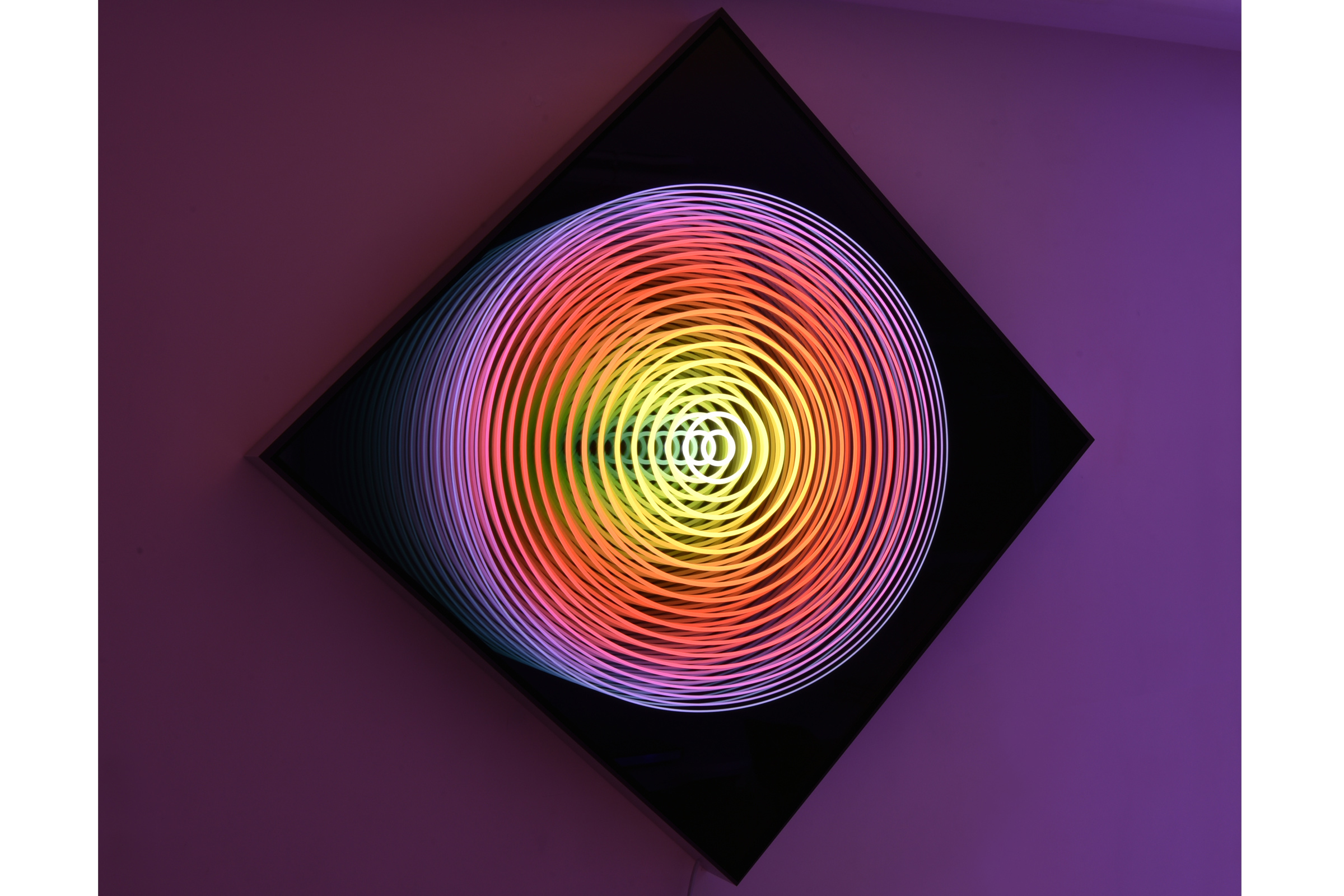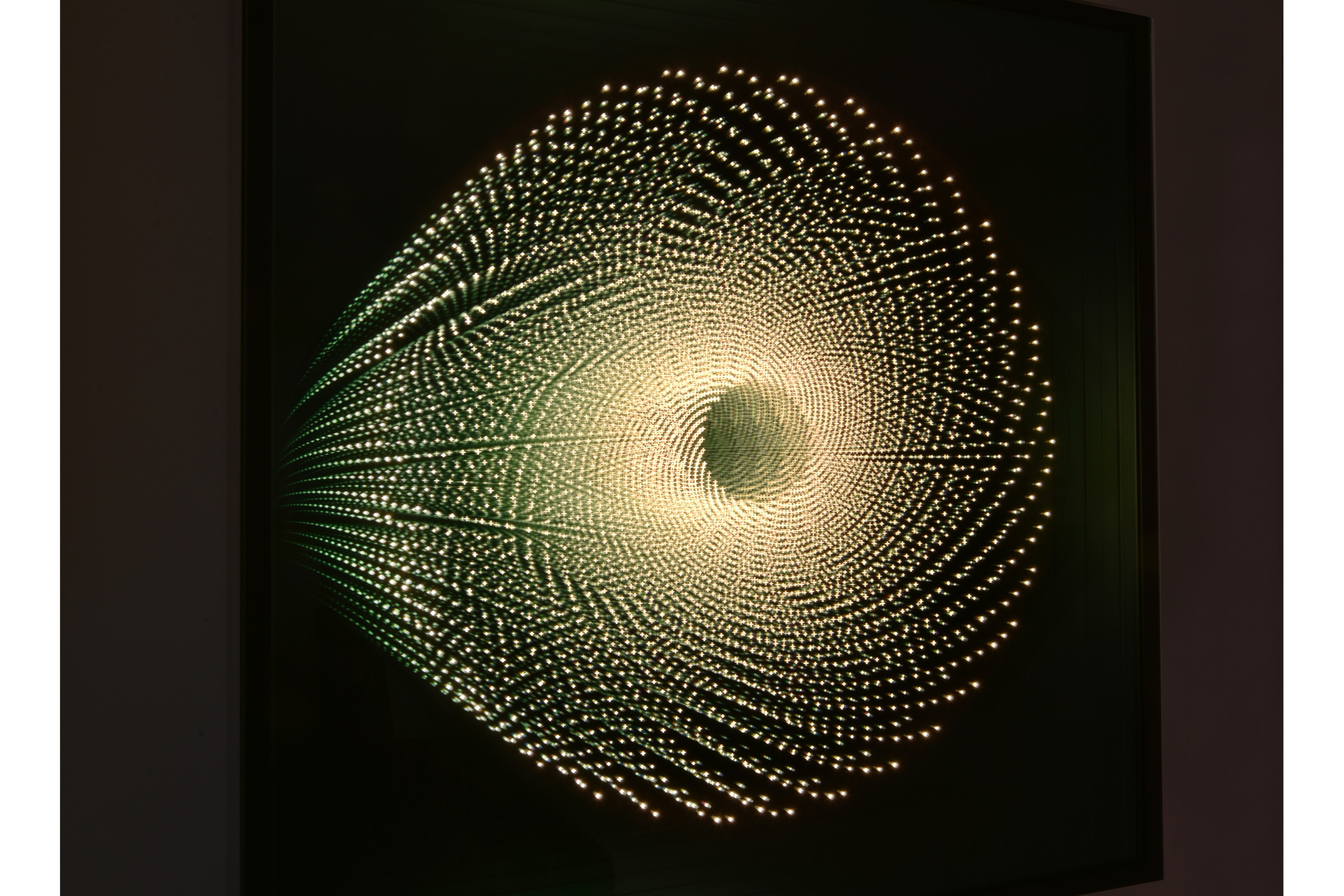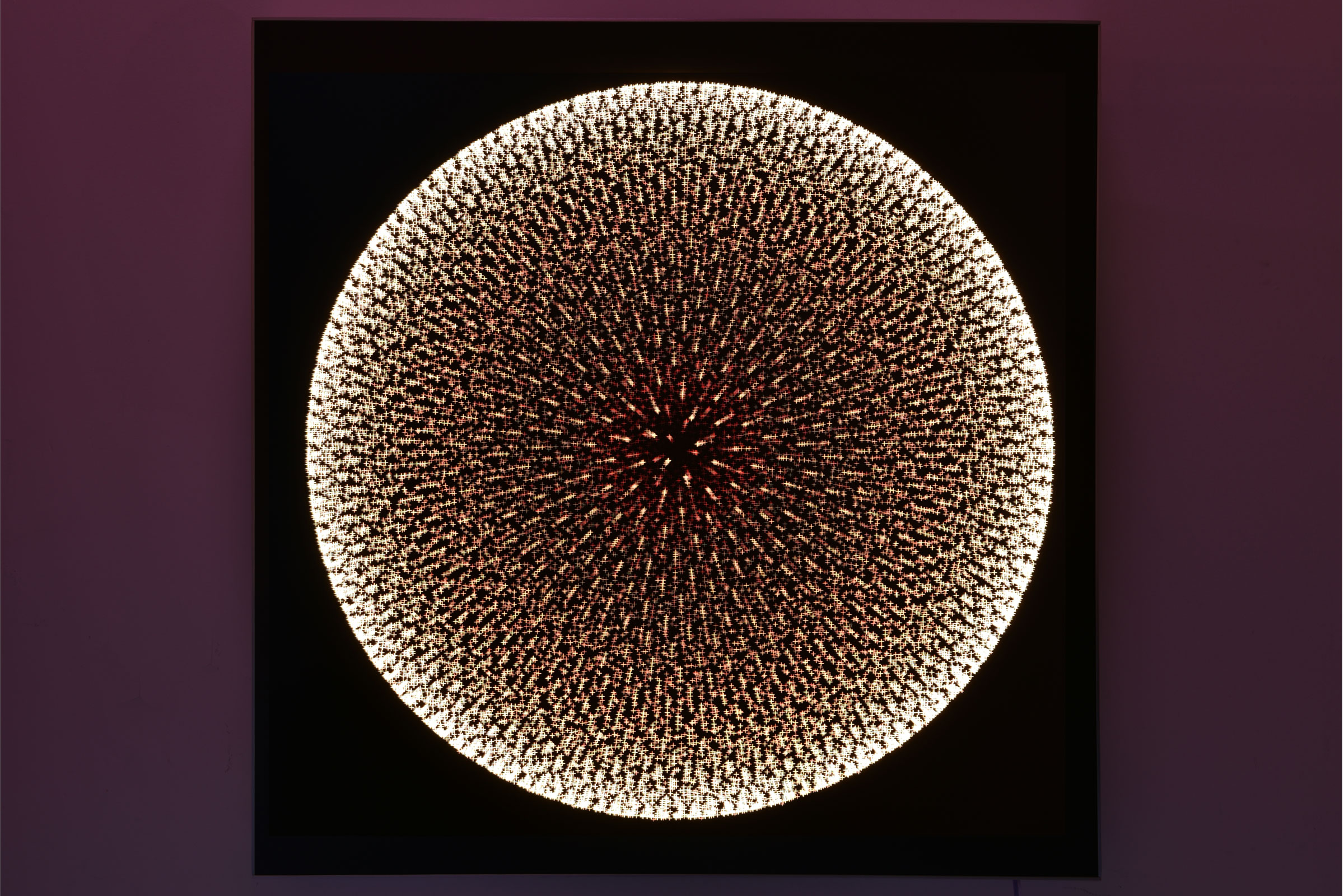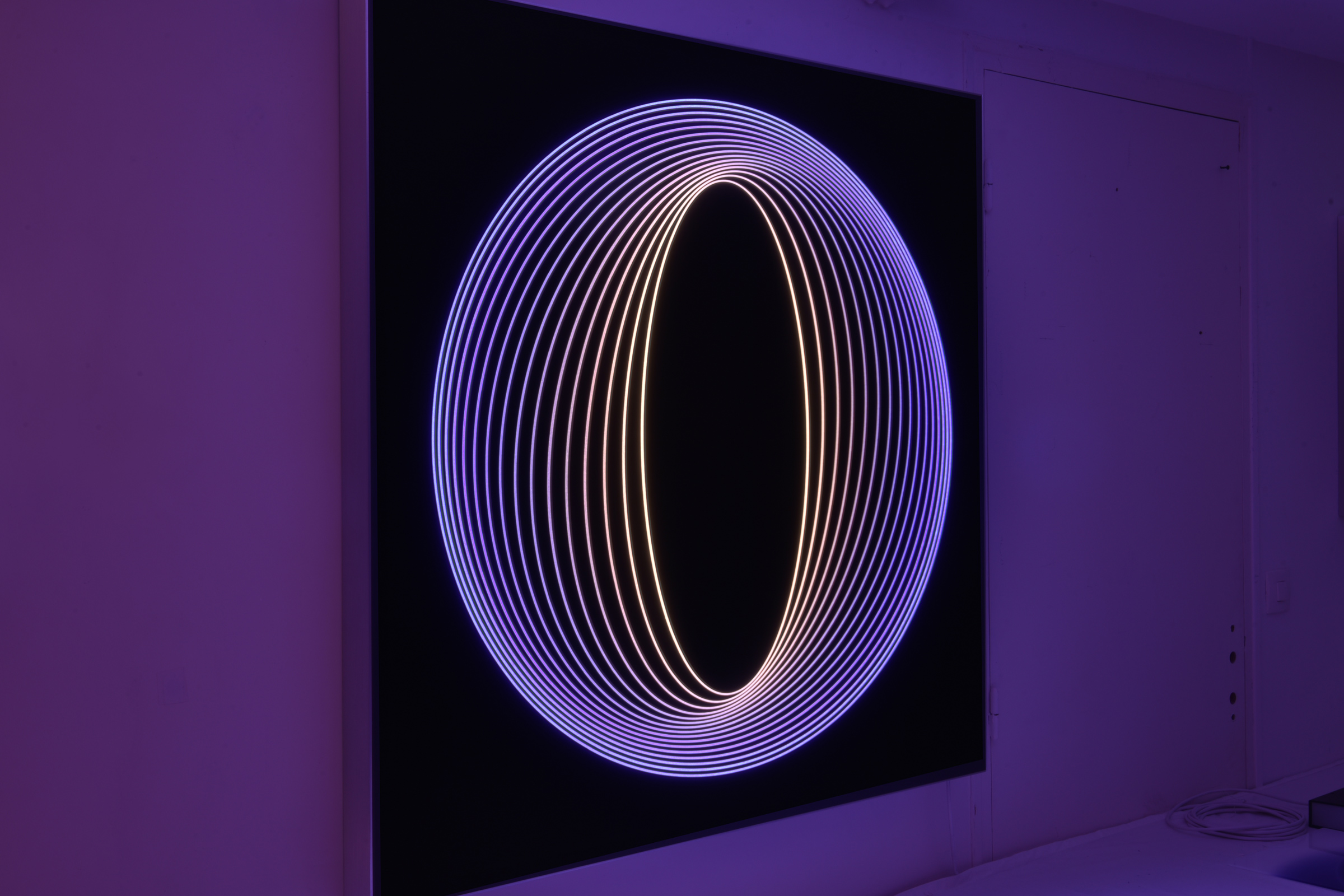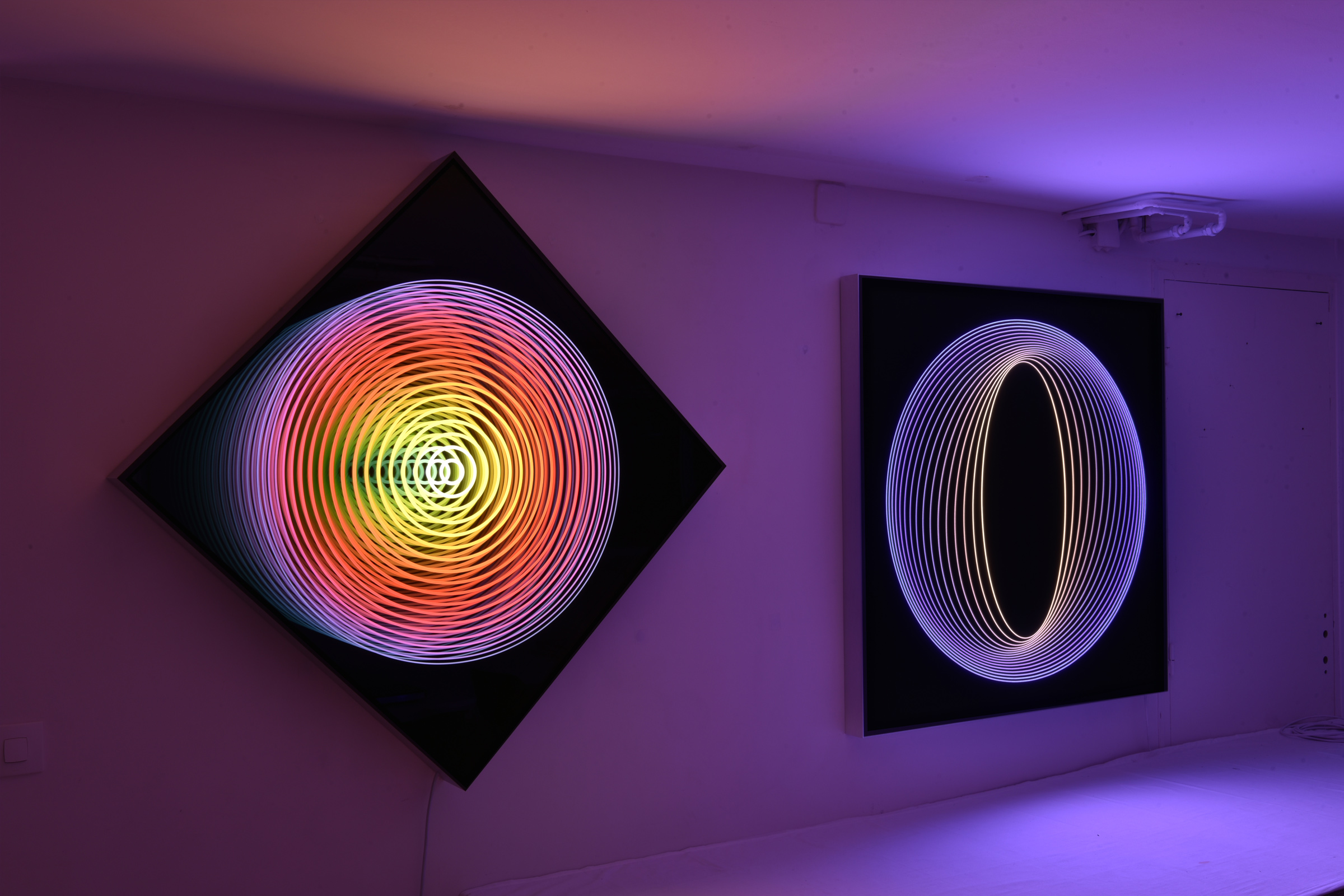The works presented by Bardula for their second solo exhibition at Galerie La Ligne, A Geometric Journey, spanning from luminous relief to dematerialized sculpture, invite us to a virtual journey into the invisible and distant world of the cosmos. The approach of this duo of artists, which is part of the filiation of optico-kinetic art1, reveals an interest for the relationships between art and science, and more particularly, mathematics and geometry, light and astronomical phenomena of the universe, playing with the laws of physics to offer a poetic perception at the borders of knowledge.
Bardula's preferred mode of expression, luminous reliefs create visual situations that take us beyond the visible world. A first body of works shows a predilection for shapes derived from the circle or the spiral, whose swirling movements address the eye with unequalled efficiency, drawing it towards the focal point of the work around which everything is organized. Following the principle of radar echo propagation, Mist diffuses energy fields that trap the eye in the endless sequence of its concentric circles.
Creations such as Starry Night or Fibonacci's Bubbles, in this respect, are exemplary : their center, similar to a black hole, draws the eye towards this dark zone of abysmal depth. The gaze, totally mesmerized, is caught in a game of back and forth between absorbing space and frontality that can sometimes be disconcerting for the observer : luminous vibrations, moiré effects whose aspect changes according to the movement of the spectator...
All these phenomena, explored with great inventiveness, are underlined by a carefully researched work on electroluminescent color, whose sensory and particulate qualities Bardula exploits with remarkable refinement.
An artwork like Photon combines transparency and opacity through the tight weave of colors wrapped around a ring in the most subtle green-yellow gradations. With Metaverse, shapes of great crystalline clarity diffuse their radiance in tones ranging from immaculate white to blues and purples, while Solar Spectrum resorts to more complex processes of color filters to amplify the vibratory power of the spectrum’s colors.
As such, Bardula does not yield to any systematism : each work, each design gives rise to renewed combinations of light and color, which, moreover, are modulable through a system of remote control or variators.
In another set of luminous reliefs, the strategies to appropriate the gaze developed by Bardula are significantly different. As the superimposed frames of Sierpinsky Pyramid show, these constructions, by their all-over distribution, create a continuous visual field and seem to extend beyond the material limits of the artwork. Their regular occupation of the surface, undermining any relationship between foreground and background, center and periphery, consequently demultiply the focal units of composition.
In Starry Night, these effects are amplified by the use of the mirror, which creates a fascinating, but also vertiginous, impression of infinite pattern duplication. To reinforce this feeling of endless artwork and immateriality, the chromatic range chosen by Bardula for these creations is rather restricted to monochrome tones, close to pale blue and white, evoking some distant constellations.
The complexity of the formal systems elaborated by Bardula could not be fully appreciated without measuring the incredible rigor and meticulousness they require. Just like the elders of kinetic art, Bardula has the scientist's spirit of research and precision. The artworks do not tolerate any randomness ; they are built with the same concern for accuracy that drives the engineer and requests a perfect knowledge of new technologies, 3D modeling, LEDs...
In parallel, Bardula develops within its sphere of expression, some artworks which, although plane, give rise to fantastic illusions of volume or depth, in the manner of a Vasarely painting. Denying the frontality of the surface, these artworks result from the organization of abstract motifs that often evoke molecular models (Ether) but also impossible geometric figures, caught in tangles of complex forms that seem to advance, retreat, swell in incredibly subtle gradations of black, white and gray.
Bardula's cosmic imaginary also revolves in the three dimensions of space with sculptures composed of aluminum blades (Red Square), whose volume results from the successive alignment of plates that do not touch. Printing the actual space with their linear rhythm, they seem to trap the moment when the shapes appear, as if crossed by waves varying in space-time according to the point from which they are observed. As if freed from the laws of gravity, they are hollowed out in their center and propel on the walls effects of shadows and lights triggering impressions of optical distortion. Here, the phenomenon of appropriation of the artwork doubles as a physical experience : the slightest movement of the viewer produces a feeling of increased movement. The visual experience becomes global.
Bardula's works, shining with magnetic force and light, explore the dynamics of vision with science and poetry. Affirming the supremacy of the eye in their apprehension, they push perception further and raise philosophical questions : How does each of us apprehend the invisible towards which these creations draw us ? Is the essential in the visible or the invisible ? What is the veracity of the eye ?
Domitille d’Orgeval, Curator and Art Historian
1 Bardula is more precisely in line with the artists defended by Galerie Denise René since its historic exhibition, Le Mouvement, in 1955, and those affiliated with the GRAV group (created in 1960) which were also exhibited on several occasions. Among them are Vasarely, Soto, Julio Le Parc, Yvaral, Morellet... To this list, let us add the work of the English Bridget Riley, for the Op art character of the work, and that of the American James Turell in the spatial apprehension of light.
